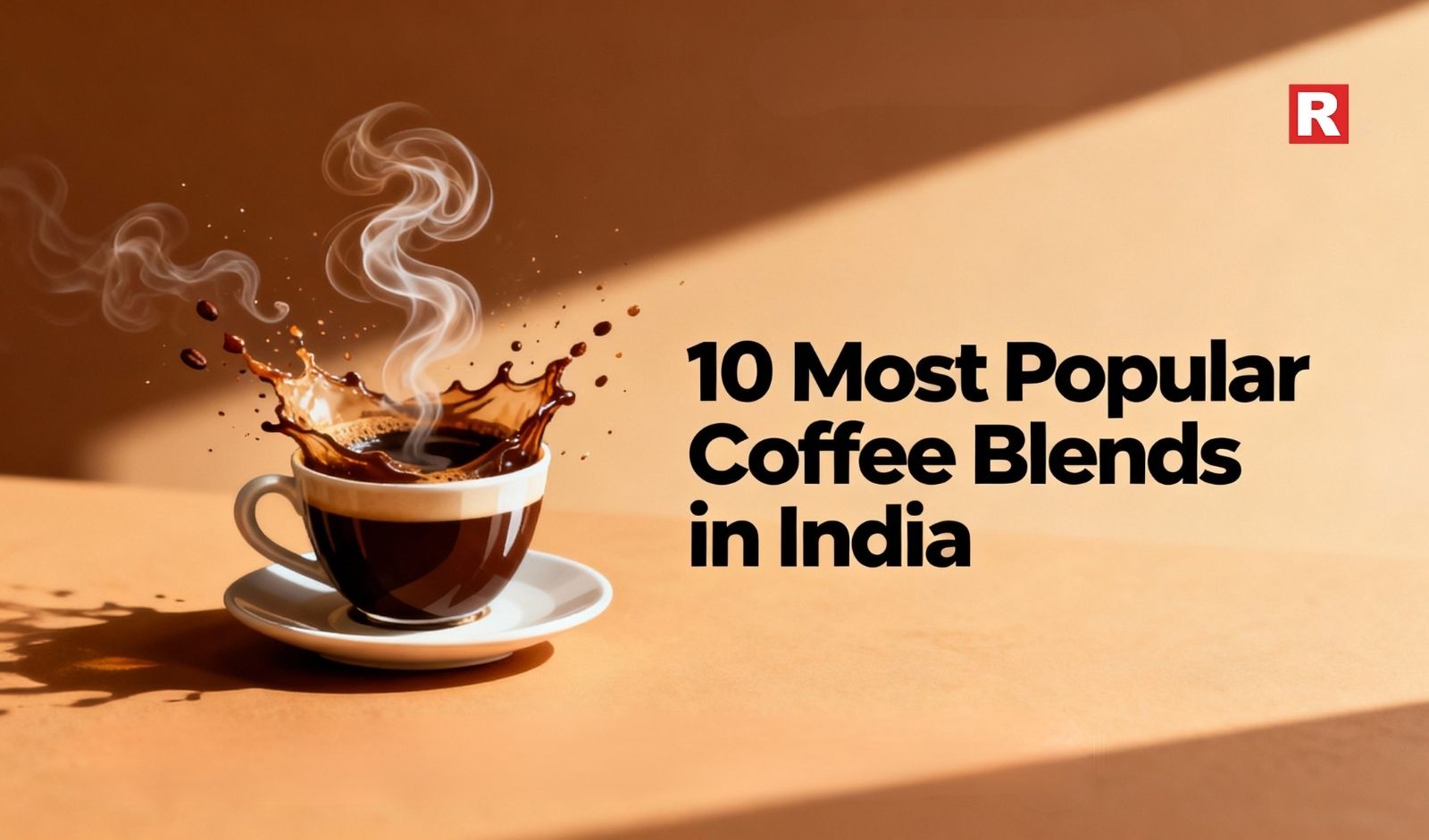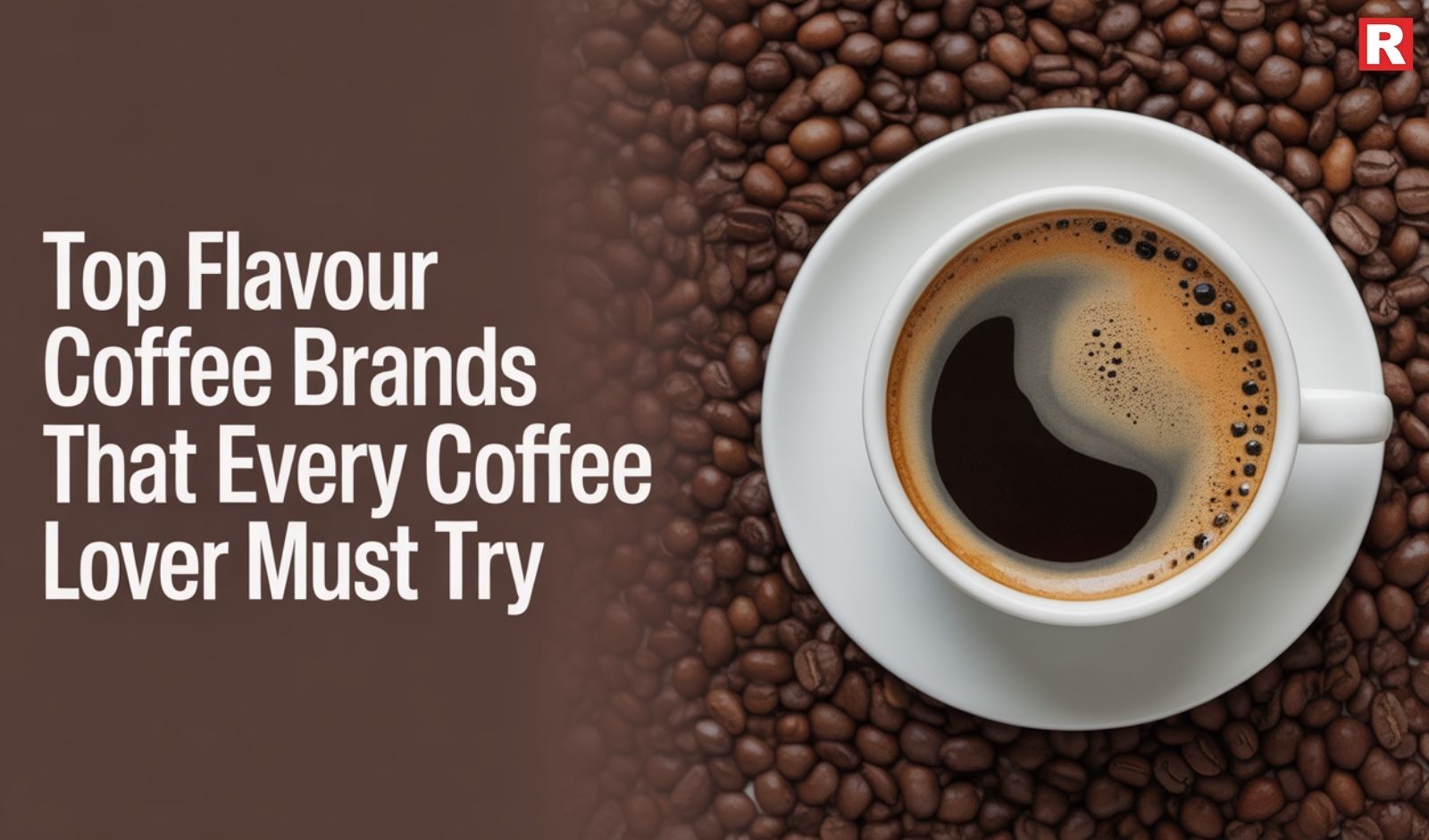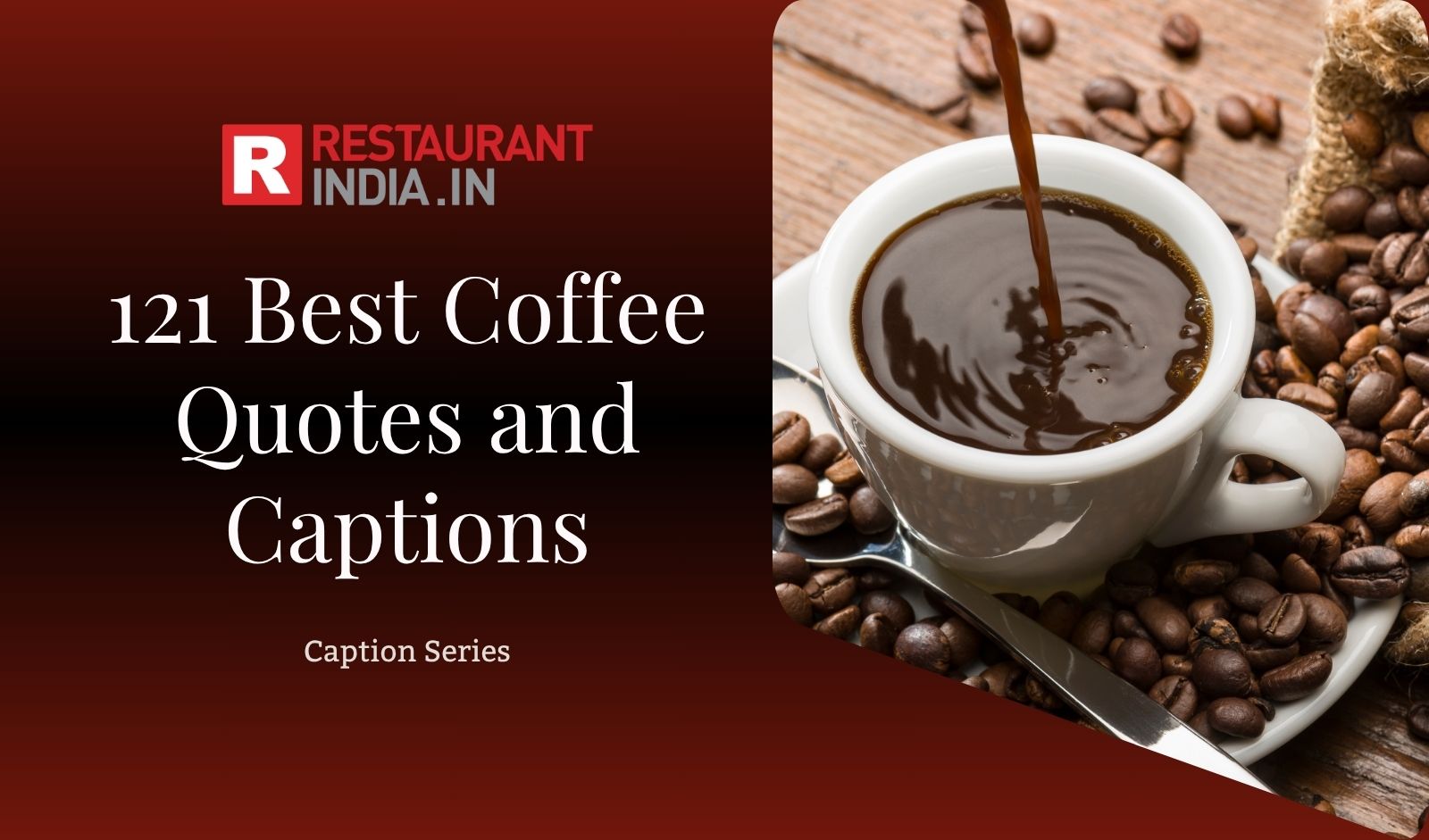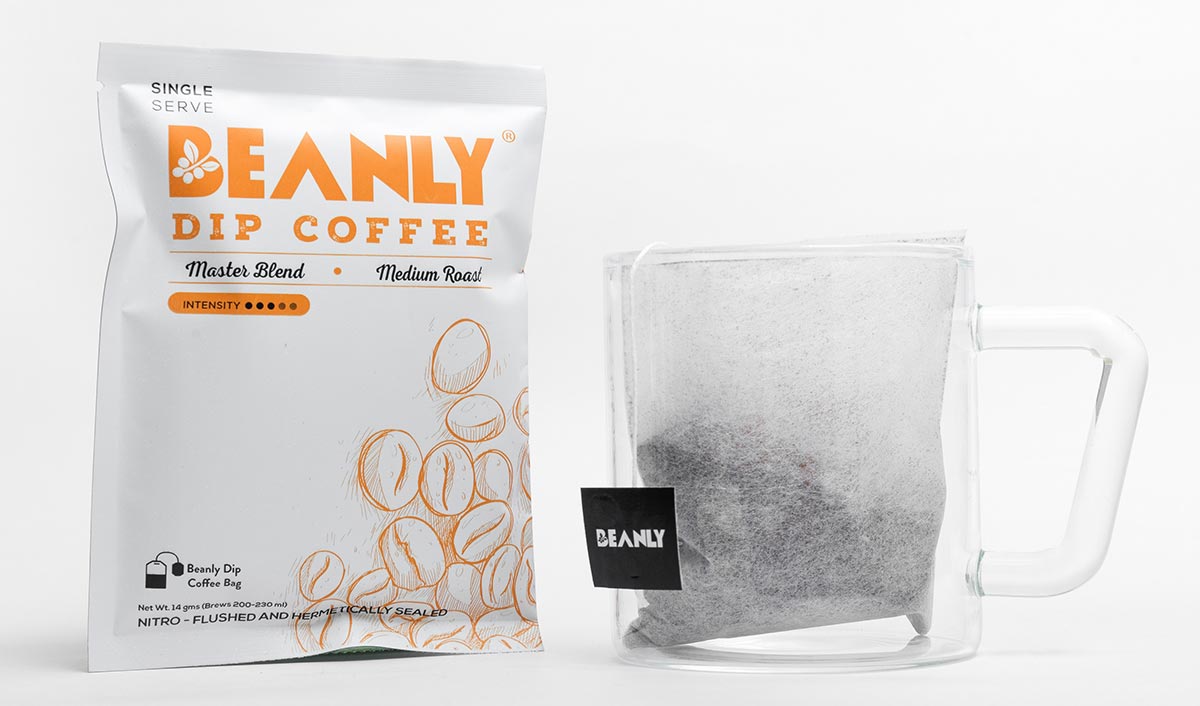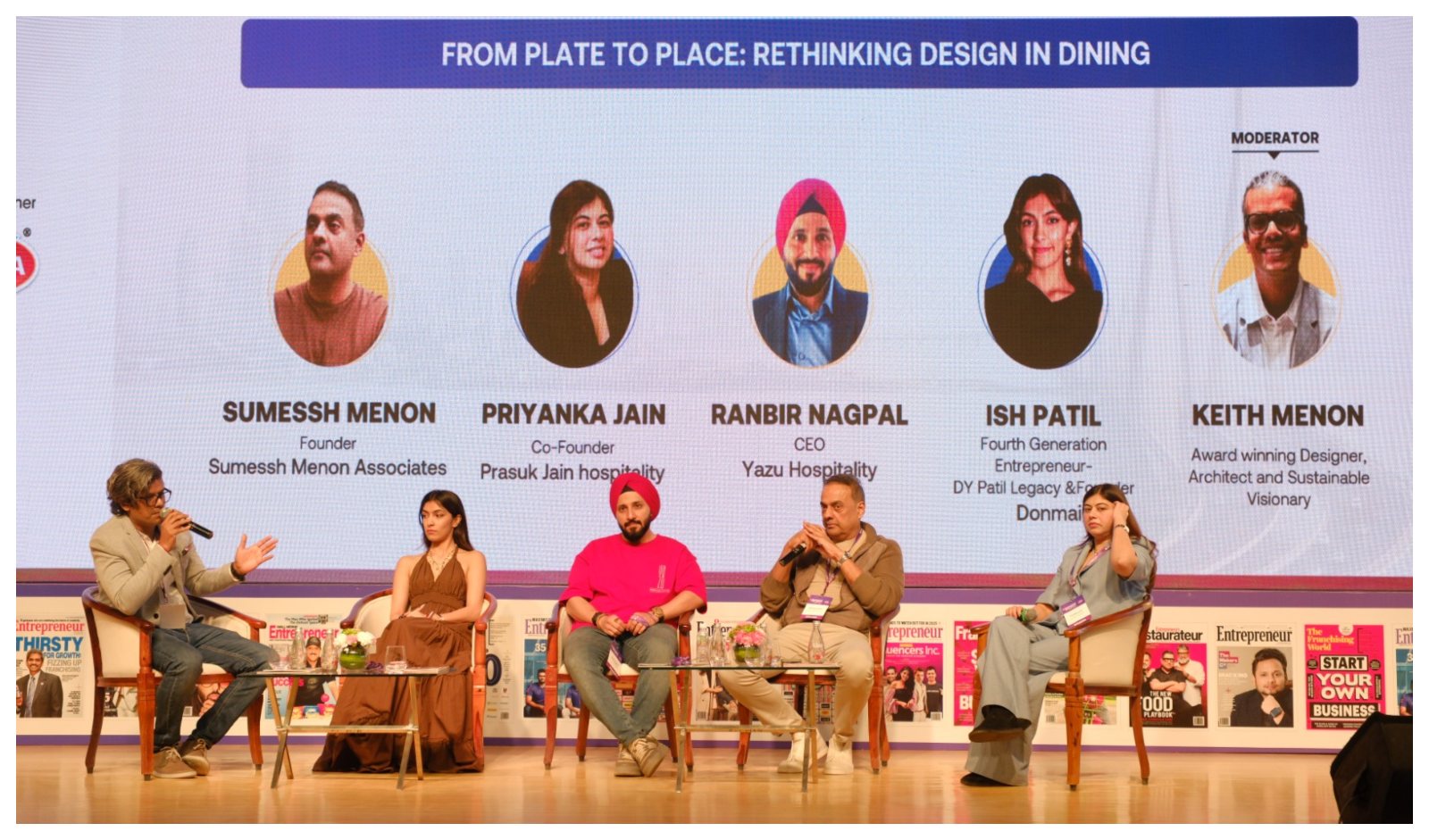
Coffee in India isn’t just a substitute for tea. For decades, it quietly stayed in the kitchens of the south, brewed in steel filters and poured with a practiced hand. Now, things have changed. Cafés are everywhere. People are getting creative at home, trying out pour-over drippers, French presses, moka pots, and many more. Grocery shelves are packed with premium blends from estates scattered across the Western Ghats.
India’s coffee scene is deep and full of surprises. The country’s coffee growers have been at it for generations, and the coffee they produce is famous because it is smooth and balanced, often blending Arabica and Robusta in unique ways. If you like your coffee soft and mellow, you’ll find something. If you want it bold and earthy, there’s that too. There really is a blend for everyone.
In this article, you’ll get to know the ten most popular blends in India, what they taste like, how to brew them, and why people love them so much.
Read more: Top Flavour Coffee Brands in India That Every Coffee Lover Must Try
Understanding What Makes a Blend Stand Out
A coffee blend isn’t just a random mix of beans. It’s a careful combination of different origins, roast levels, and flavors. Roasters use Arabica for its fragrance and complexity, and Robusta for its punch and body. Some blends look for deep, chocolatey richness. Others bring a bright, zesty kick. And a lot of Indian blends add chicory, which is a roasted root that makes the coffee thicker and gives it a bittersweet edge.
The best blends strike a balance that’s perfect for everyday drinking. India’s climate, with its tropical heat, monsoon rains, and high-altitude estates, means there’s a huge range of flavors to play with. Roasters can create blends that appeal to total newbies and coffee enthusiasts alike.
So, with that in mind, let’s look at the ten blends that really get people talking.
Ten Most Popular Blends of India
1. South Indian Filter Coffee Blend
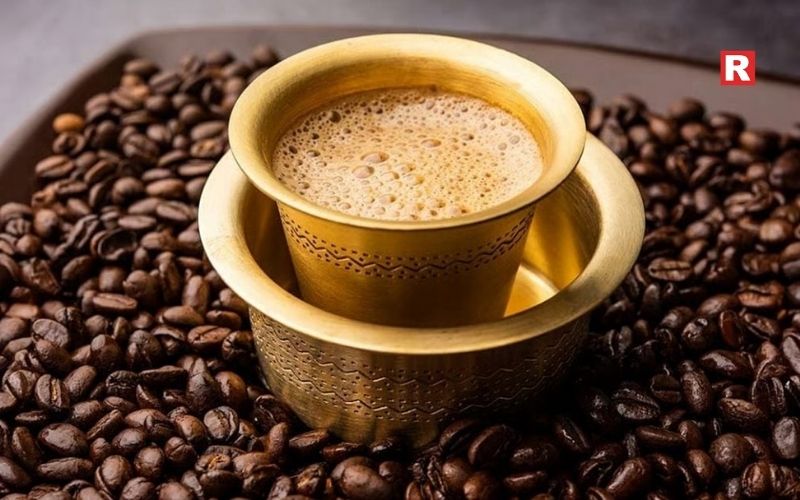
You can’t talk about Indian coffee without starting from here. This blend is more than a drink. It’s a tradition. It’s warm, aromatic, and packed with nostalgia. Usually, it’s a mix of medium-dark roasted Arabica and Robusta, plus a bit of chicory. Chicory thickens the coffee and leaves a caramel finish that pairs perfectly with hot milk.
It’s brewed in a steel filter, and the result i a cup of coffee that’s smooth, full, and never too sharp. For a lot of families, this is an essential part of their breakfast. It’s popular because it tastes great, sure, but also because it feels like home.
Know more: 10 Best Coffee Bean Brands in India
2. Monsooned Malabar Blend
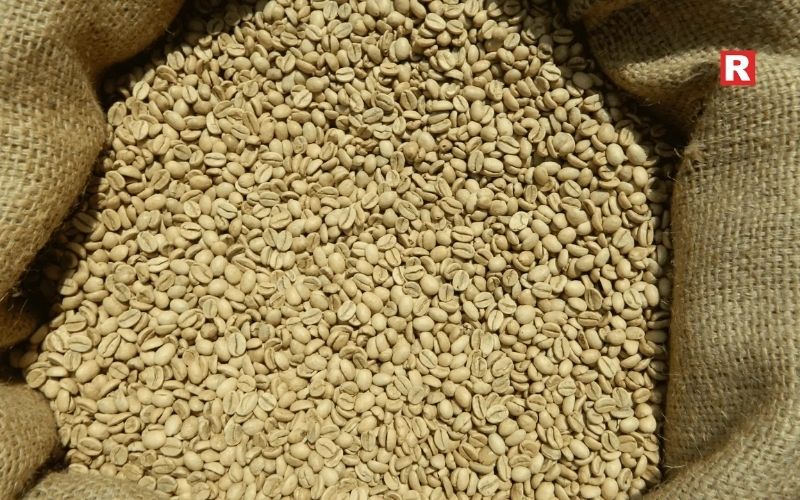
If you want something unique, try this blend. During the monsoon season, these beans are exposed in open warehouses and soak up the damp winds, swelling up and losing most of their acidity. They turn pale gold and taste ridiculously smooth, soft, and mellow, with an earthy finish.
Roasters often mix Monsooned Malabar beans with some lightly roasted Arabica for aroma. The result is a cup that’s low on sharpness and big on comfort. People love it in the afternoon, when you want something gentle. Espresso fans love it too, since it feels like a creamy shot with almost no acidity.
3. Indian House Espresso Blend

Walk into any café, and you’ll probably be drinking some version of this. It’s built on medium-dark Robusta for body and crema, with Arabica thrown in for a bit of fragrance. If done right, you’ll get flavors of cocoa, roasted nuts, and a hint of spice i your coffee.
This blend works everywhere. It makes a strong, dependable shot of espresso. Cappuccino, latte, mocha, cold coffee, it handles them all. Home baristas love it because it’s reliable, especially with moka pots or espresso machines.
4. Plantation A Blend
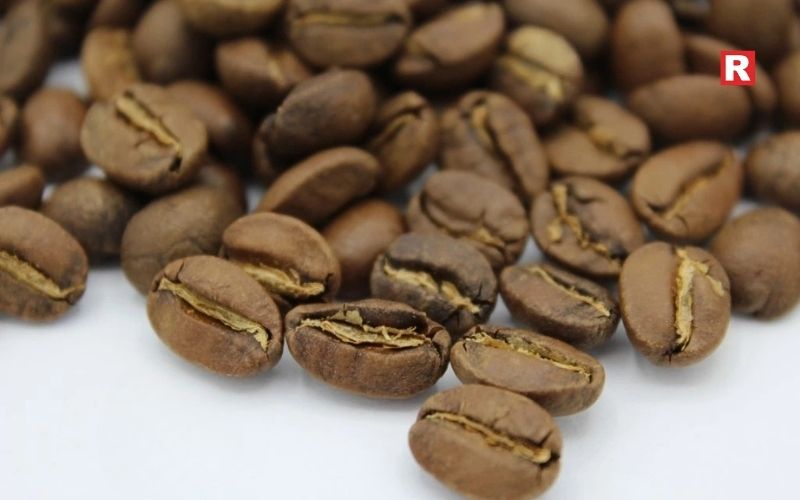
Plantation A is a well-known grade of washed Arabica that’s famous for being clean and balanced. Roasters usually get beans from estates in Karnataka or Kerala and blend them for a medium body and gentle acidity.
Its flavor leans toward mild sweetness, with hints of citrus or light chocolate, depending on how it’s roasted. If you like your coffee clear and not too heavy, this is your blend. It’s perfect for pour-over or drip brews, where those subtle flavors really come through.
5. Peaberry Blend

Peaberry beans are a bit of a rarity. When a coffee cherry produces just one round seed instead of two, you get a peaberry. They roast evenly and pack a lot of flavor. Peaberry blends usually mix peaberry Arabica with some peaberry Robusta, giving you a cup that’s bright but still balanced.
This blend’s a favorite for anyone who loves lively acidity and a crisp finish. You’ll usually taste some fruit, a hint of spice, maybe a bit of floral sweetness. It’s great for people who drink their coffee black and want something bright and energetic, without that bitter bite.
What's new: 12 Refreshing Herbal Tea Blends You Must Try This Season
6. Cold Brew Blend
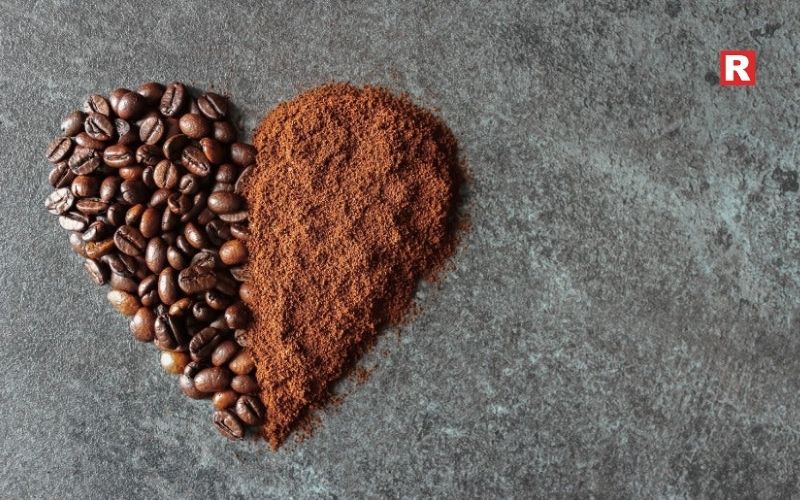
Cold brew needs a different approach. Roasters go for a medium-dark roast, so the coffee’s rich but not too tangy. They pick beans that naturally turn out sweet and smooth after sitting in cold water for hours.
You’ll often notice flavors like chocolate, caramel, or toasted nut flavors. It’s cool and refreshing, with no sharpness. No wonder it’s a go-to in the summer, especially for younger coffee fans and anyone who likes café-style cold brews at home.
7. Specialty Arabica Blend
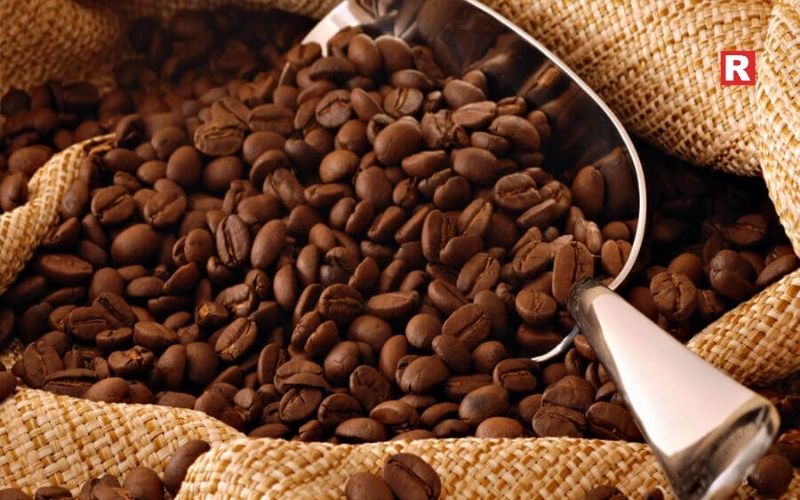
This blend category has gained remarkable popularity thanks to specialty cafés and small-batch roasters. A specialty Arabica blend uses top-grade beans from estates where farmers pay extra attention to careful cultivation, shade-grown, and handpicked.
Flavors can swing all over the place: berries, citrus, cocoa, caramel. These blends are perfect for manual brewing methods, where you can really notice the details. If you’re curious and want to taste something beyond the usual café stuff, this one’s for you.
8. Indian Spiced Coffee Blend
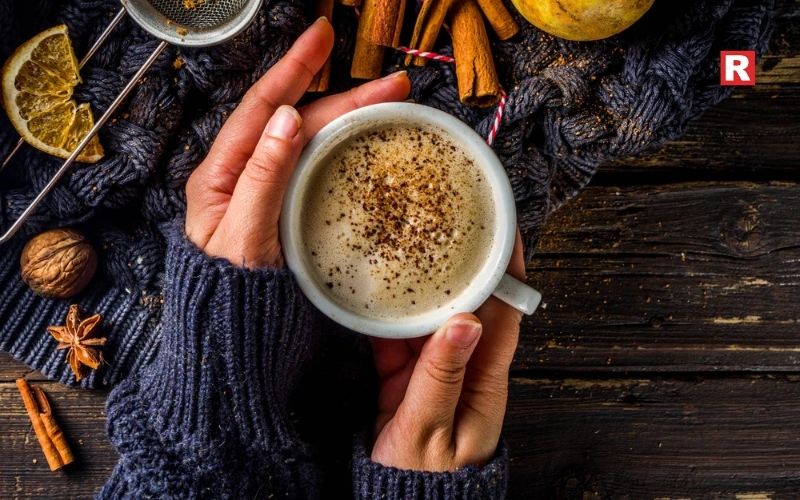
Adding spices to tea is old news in India, but spiced coffee has gained quite an influence of itself. These blends mix ground cinnamon, cardamom, nutmeg, or clove right in with the beans.
The result is a cup that smells amazing and feels warm and festive. It’s especially good with milk and made especially as soon as winter sets in. Now, you’ll find plenty of brands that offer ready-to-brew blends, so you don’t have to mess around with spices yourself.
9. Chicory-Rich Heritage Blend
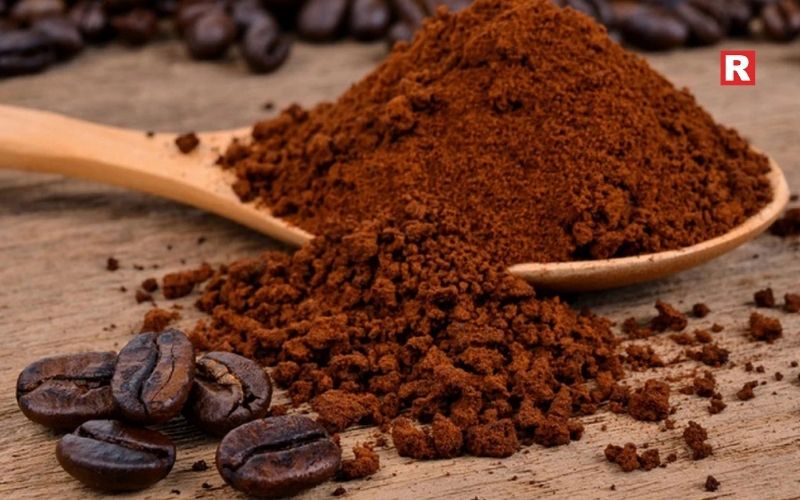
Chicory’s a classic in Indian coffee. Heritage blends pack in more chicory, making the coffee dark, aromatic, and bold.
You get a strong, bittersweet cup that feels thick and satisfying, which is perfect if you like your coffee with milk. It’s affordable and familiar, a true comfort drink for anyone who loves full-bodied, old-school taste.
10. Premium Instant Blend

Instant coffee isn’t what it used to be. Newer premium blends combine spray-dried and freeze-dried granules, so your coffee holds onto more aroma and body. Most brands now focus on Arabica, so the taste is much smoother than old-school instant.
It’s still one of India’s top sellers because it’s so easy. No equipment needed, always consistent, and good flavor with zero hassle. Sure, it’s not as deep as fresh-brewed, but it’s reliable, and that’s why it’s a staple in so many homes.
The Influence of Regions on Indian Coffee Blends
India’s coffee belt stretches through Karnataka, Kerala, Tamil Nadu, and parts of Andhra Pradesh. The weather, height, and soil in these states shape every bean.
- Karnataka grows most of India’s coffee, like smooth, full-bodied Arabica and strong Robusta.
- Kerala’s beans are lean, sweet, and clean.
- Tamil Nadu offers balanced flavors and nice acidity.
- Andhra Pradesh contributes smaller than others but is gaining fans for its earthy coffees.
These regional traits give roasters the ability to create blends that feel distinctly Indian, offering character and depth without overpowering acidity.
Check out: Top 10 Tea Brands in India That Every Chai Lover Swears By
10 Vegetarian Indian Foods That Help You Gain Weight the Healthy Way
Choosing the Right Blend for Your Taste
Knowing what you like makes picking a blend simple.
- For strong, milky coffee, go for chicory blends or house espresso.
- If you want something mellow and smooth, try Monsooned Malabar or Plantation A.
- If you like it bright and fresh, Peaberry or specialty Arabica is your best bet.
- For pure convenience, stick with a premium instant.
- Cold brew blends are best if you want iced coffee.
- For that South Indian vibe, filter coffee blends are the way to go.
Your brewing method matters too. Some blends shine in filters, others in espresso machines or French presses.
Brewing Recommendations
Want to get the most from your blend? Then try this:
- Filter brewers bring out aroma and a rounded taste.
- French press gives you heft and depth.
- Pour-over makes the flavors clear and complex.
- Moka pots deliver a punchy, concentrated cup.
- Cold brew pitchers turn up the sweetness and keep acidity low.
Getting the grind, water temp, and brew time right makes a big difference. Small adjustments can really elevate your coffee cup.
Storage Tips for Freshness
Coffee loses its magic fast if you leave it out. Keep your beans or grounds sealed tight, away from sunlight and moisture. Don’t use the fridge to store food, as condensation ruins flavor. Try to buy smaller packs, especially with special blends. Freshness matters more than you might think.
Last Sip
A good coffee blend stays in your mouth, even after you’ve finished the last sip. In India, some blends are just legendary, rich and cozy, bright and lively, or maybe soft and sweet. Exploring these blends isn’t just about the drink; you start to pick up on how region, roast, and tradition all play into making those flavors. Maybe you wake up craving something strong and bold, or maybe you want something mellow to ease into the morning. Either way, there’s always a blend that matches your mood. As coffee culture keeps picking up steam in India, these classic blends stick around, always there to welcome both newcomers and old fans with something warm, familiar, and just a little bit special.
Learn more: 7 Tequilas That Deserve a Spot on Your Bar Shelf

India’s relationship with coffee has changed over the years. Once famous as a tea-loving nation, it is now embracing coffee with great enthusiasm. Across the country, people are swapping their tea cups for coffee mugs. From small cafés in Bengaluru to high-end roasteries in Mumbai and Delhi, coffee has become part of everyday life. The Indian coffee market is no longer limited to plain instant coffee. It now offers a wide range of flavoured blends, single-origin beans, and specialty roasts. Brands are experimenting with chocolate, hazelnut, vanilla, and caramel notes to suit different palates. Young consumers, in particular, are driving this trend. They prefer trying new flavours, brewing methods, and café experiences.
According to market reports, India’s coffee industry was valued at about USD 20.2 billion in 2024 and is expected to touch nearly USD 30 billion by 2035. This growth shows a clear shift in taste and lifestyle. With increasing exposure to global coffee culture, Indians are discovering that coffee is not just a drink. It’s an experience filled with aroma, creativity, and comfort in every cup.
The Importance of Flavour in Coffee
Flavour is what makes coffee more than just a morning drink. It defines personality, mood, and preference. Some like it bold and bitter; others prefer smooth and chocolatey notes. Today, coffee lovers in India have access to a wide range of choices—from nutty and caramel to fruity and floral.
The rise of specialty coffee, cold brews, and ready-to-drink options has made flavour a key purchase factor. Consumers now look for single-origin beans, unique roasting profiles, and ethical sourcing. Whether it’s the strong filter coffee from South India or a creamy cappuccino made with Arabica beans, flavour is what sets each cup apart.
Explore Top Flavour Coffee Brands in India
1. Nescafé – The Classic Choice

Nescafé remains India’s most trusted coffee brand. Known for its consistent taste and accessibility, it has been a household name for decades. The brand offers a range of flavoured variants like Nescafé Gold, Nescafé Classic, and Nescafé Hazelnut. Its instant soluble coffee is crafted for convenience while maintaining balance and smoothness. Nescafé’s flavoured mixes, such as mocha and cappuccino sachets, make café-style coffee at home effortless. It’s perfect for people who prefer a quick, rich, and familiar cup every morning.
Read more: 8 Famous Vegetarian Dishes of Uttar Pradesh and Their Timeless Legacy
6 Benefits of Drinking Black Coffee
Top Tea & Coffee Brewer Brands in India These Days
2. Bru – The Homegrown Favourite
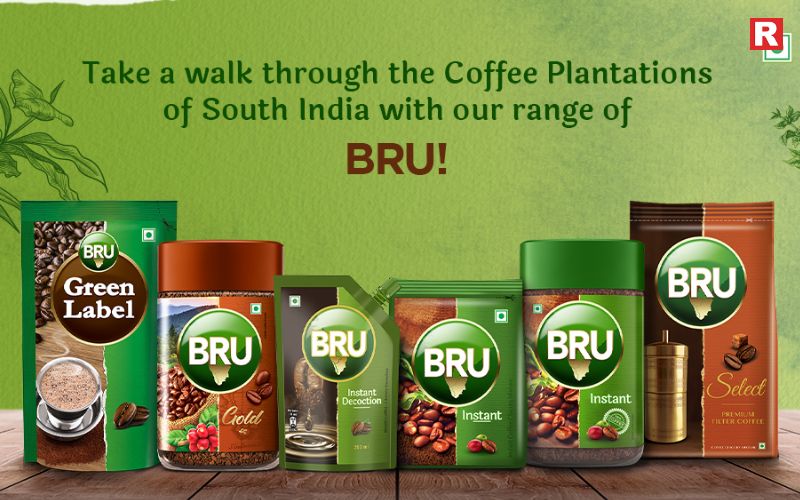
Bru is one of India’s oldest and most loved domestic coffee brands. Owned by Hindustan Unilever, it has built deep roots across Indian homes. The brand’s flagship blend, Bru Instant, combines coffee and chicory for a strong, full-bodied flavour. For those who love bold notes, Bru Gold offers 100% pure coffee with a more intense aroma. Its earthy, robust flavour caters perfectly to the Indian palate. Bru represents comfort, nostalgia, and everyday satisfaction.
3. Tata Coffee – The Estate Expert
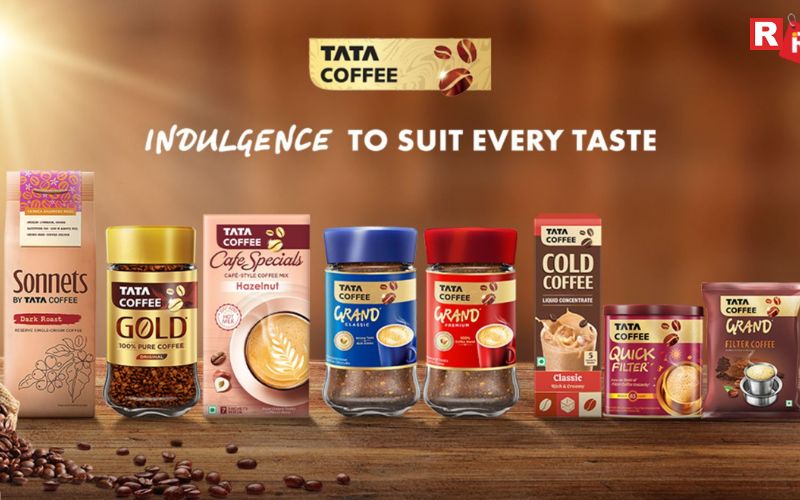
Tata Coffee brings premium taste straight from India’s finest plantations. It is one of the largest integrated coffee companies in the world, with estates in Coorg and Chikmagalur. Tata Coffee’s single-origin and estate roasts reflect craftsmanship and sustainability. Its flavoured varieties, such as Tata Coffee Grand and Eight O’Clock, offer rich texture and freshness. Each roast is carefully curated, ensuring balanced acidity and aroma. If you enjoy smooth, refined coffee with a hint of sophistication, Tata Coffee is a must-try.
4. Blue Tokai Coffee Roasters – For the True Connoisseur
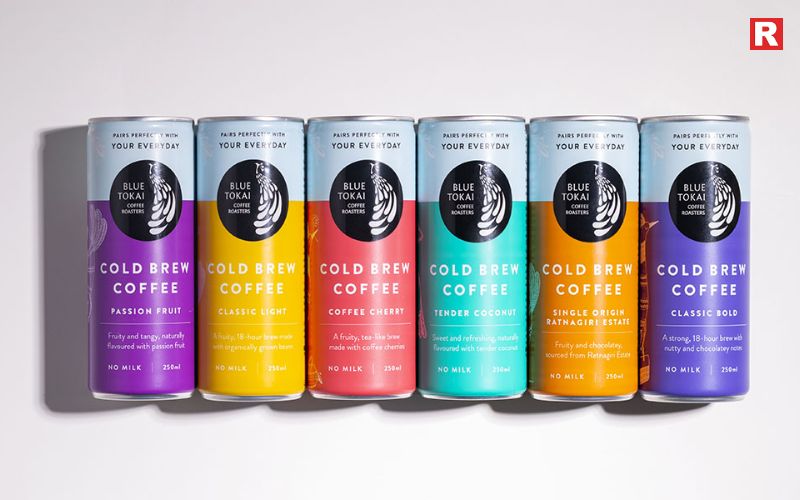
Blue Tokai has transformed India’s perception of coffee. Known for small-batch roasting and single-origin sourcing, it delivers freshness and complexity in every cup. Its flavour profiles range from chocolate and caramel to fruity and floral. Blue Tokai sources directly from Indian farms, ensuring transparency and quality. Each roast is unique, highlighting the natural flavours of the region. Popular blends like Attikan Estate and Thogarihunkal Estate are favourites among coffee enthusiasts who enjoy discovering new tastes. If you value aroma, freshness, and artisan craftsmanship, Blue Tokai is the perfect brand for you.
Know more: 11 Best Commercial Coffee Machine Brands for Café: Top Picks & Buying Guide
5. Davidoff Coffee – The Premium Indulgence
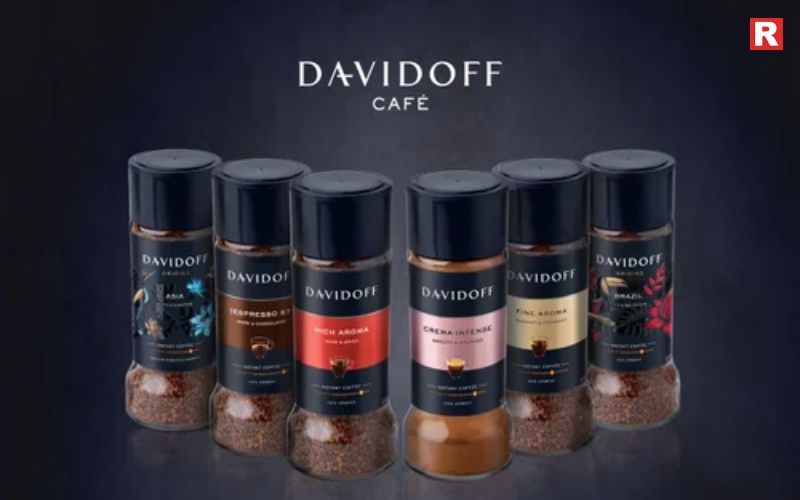
Davidoff is the luxury name in India’s instant coffee space. Imported from Europe, it delivers a smooth, sophisticated experience. Known for its 100% Arabica beans, Davidoff offers variants such as Rich Aroma, Fine Aroma, and Espresso 57. The coffee is balanced, aromatic, and designed for those who enjoy an elegant, café-like flavour at home. Every sip feels indulgent—ideal for people who view coffee as a daily luxury.
6. Hatti Kaapi – The Taste of Tradition
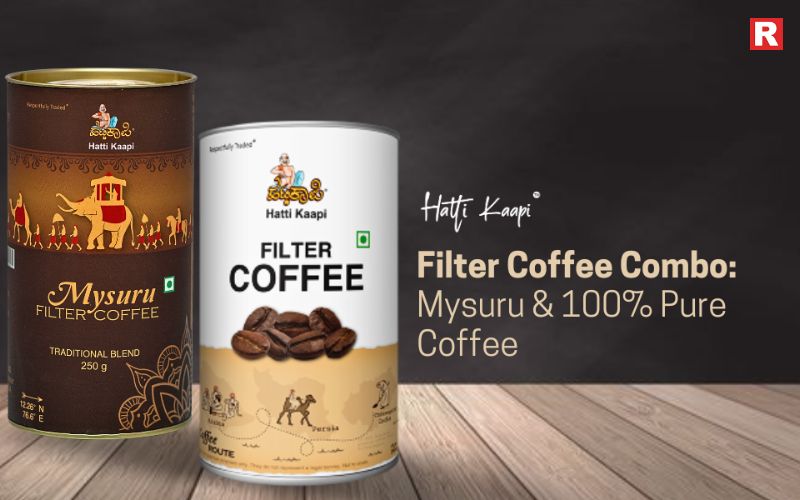
Hatti Kaapi celebrates the heritage of South Indian filter coffee. Based in Bengaluru, it has grown into a beloved brand across India. The brand’s signature blends capture the essence of authentic filter coffee—bold, aromatic, and deeply satisfying. Hatti Kaapi uses a blend of Arabica and Robusta beans roasted to perfection. The addition of chicory gives the coffee its signature thickness and richness. Served in traditional steel tumblers, it’s the taste of nostalgia in every cup.
7. Araku Coffee – From Farm to Cup
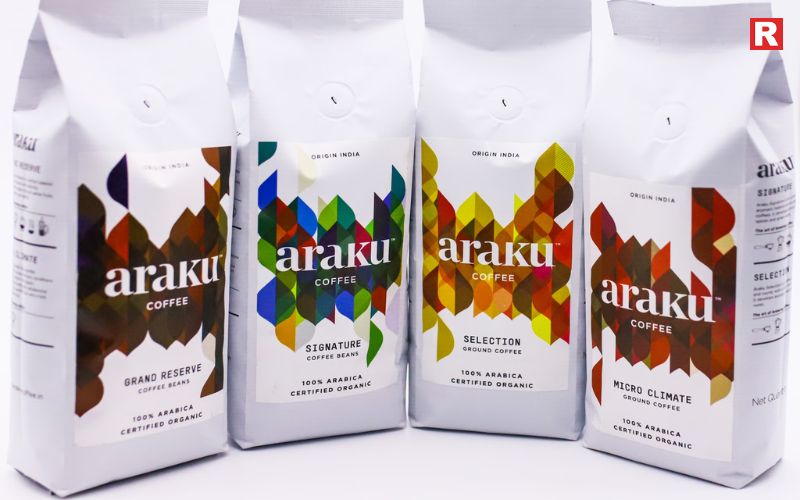
Araku Coffee is an organic, single-origin brand grown in the Araku Valley of Andhra Pradesh. Managed by a cooperative of tribal farmers, it’s India’s answer to sustainable, premium coffee. The beans are shade-grown and handpicked, resulting in a smooth, fruity, and balanced cup. Araku’s flavour range includes chocolatey, nutty, and caramel tones, depending on the roast level. It’s a brand that brings together quality, sustainability, and authentic Indian origin. Perfect for conscious consumers who love both flavour and purpose.
Also check: Top 5 Barbecue Sauces for Marinades or Dipping: Smoky, Sweet & Absolutely
10 Famous Fast Food Brands in India That Everyone Loves
Coffee Flavour and Roasting Explained
Flavour depends heavily on bean type and roast level. Arabica beans offer a smoother, fruitier taste, while Robusta beans are stronger and more caffeinated. Light roasts bring out bright, acidic flavours. Medium roasts highlight sweetness and balance. Dark roasts provide a deep, chocolatey taste.
Indian coffee, especially Monsooned Malabar, is famous for its mellow, earthy tones. The monsooning process exposes beans to moist winds, giving them a soft, distinctive flavour found nowhere else in the world.
How to Choose Your Perfect Flavour
Choosing your flavour depends on what you enjoy most.
- If you like mild and creamy, go for Nescafé Gold or Davidoff Fine Aroma.
- If you prefer strong and bold, try Bru Gold or Hatti Kaapi.
- For fruity or chocolatey notes, explore Blue Tokai or Araku Coffee.
- If you want a balanced, everyday cup, Tata Coffee Grand is ideal.
Always check the roast date and bean type. Freshly roasted beans have richer flavours and better aroma. Experiment with brewing methods—filter, espresso, or cold brew—to find your perfect taste.
Final Sip
Flavour gives coffee its character. It turns an ordinary drink into a personal experience. Every blend, roast, and aroma speaks of where the beans come from and how they are crafted. Whether it’s a quick instant mix or a carefully brewed single-origin roast, each cup holds a unique story. Across India, coffee lovers are learning to appreciate these small details. They notice how aroma, texture, and aftertaste change with every brand and brewing style. The country’s top flavour coffee brands are creating more than just caffeine fixes. They are building experiences that connect people to taste, place, and tradition. Each sip now reflects India’s evolving coffee culture—bold, creative, and deeply personal. The next time someone pours a cup, it’s not just coffee they’re enjoying. It’s a moment that captures the journey of flavour, craft, and passion growing across the nation.

India has long been known for its deep love of tea. Over the last decade, coffee too has found a strong following. The café culture across cities and the recent shift to work-from-home setups have changed the way people enjoy their daily cup. More individuals now prefer brewing fresh tea or coffee at home rather than relying only on cafés or instant mixes. This change has created a rising demand for tea and coffee brewers in India.
Today, the market is filled with options to suit every taste and budget. From simple French presses that bring out rich flavors to advanced espresso machines that deliver café-style drinks, the choices are many. Consumers are also exploring pour-over kits, infuser bottles, and compact kettles. Each type of brewer offers a unique experience, making the process of preparing tea or coffee more personal and enjoyable. With so many options available, it becomes important to look at the brands that are making a mark in this growing market and understand what sets them apart.
Read more: 6 Benefits of Drinking Black Coffee
10 Low-Budget Cafe Interior Design Tips to Follow
Why Brewing at Home is Trending
Brewing at home is no longer just about convenience. It is about enjoying the process of making a perfect cup. People are moving away from instant coffee and tea bags. They want fresher, more flavorful drinks. For many, brewing is a small daily ritual. It gives the same joy as café-style drinks but at a fraction of the cost. Millennials and Gen Z, in particular, are driving this trend. They are investing in brewing gear that is easy to use, stylish, and durable. The rise of online shopping has also made international and Indian brewer brands easily available. Quick commerce platforms are delivering brewing kits within hours. This has made experimenting with home brewing even more exciting.
Top 6 Tea & Coffee Brewer Brands in India
Here are six brands that are popular among Indian tea and coffee lovers these days.
1. Philips

Philips is one of the most trusted names in home appliances. In the coffee brewing space, Philips offers easy-to-use drip coffee machines that are perfect for beginners. Its coffee makers are known for durability, consistent taste, and simple design. For families, the machines with larger carafes are useful. For individuals, Philips also has compact models. The brand is also popular among tea lovers, thanks to its electric kettles. They heat water quickly and are safe to use. Philips combines affordability with long-lasting performance, which is why it remains a top choice for many households in India.
2. Preethi
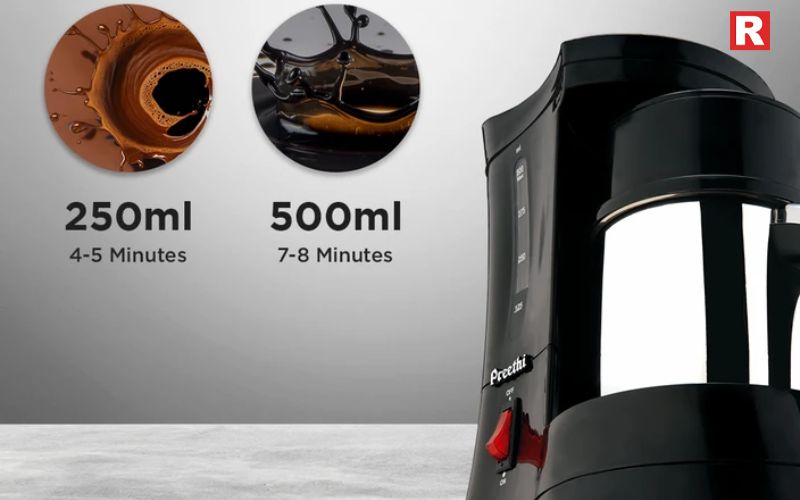
Preethi is an Indian brand that has won the hearts of coffee lovers, especially in South India. The brand’s filter coffee machines are designed to brew authentic South Indian filter coffee at home. The machines are compact, stylish, and easy to clean. Preethi understands the traditional coffee culture in India and adapts its products accordingly. For tea lovers, Preethi also offers kettles that make brewing fast and convenient. What sets Preethi apart is its strong connection with Indian tastes. If you want your coffee to feel close to home, Preethi is a brand worth trusting.
3. Hario

Hario is a Japanese brand that has become very popular in India in recent years. Known worldwide for its pour-over coffee gear, Hario is the go-to brand for coffee enthusiasts who love manual brewing. The Hario V60 dripper is especially famous. It allows you to control every detail of your brew, from water temperature to pouring speed. This makes it a favorite among people who want to experience coffee at its purest. For tea, Hario offers glass teapots and infusers that combine elegance with function. The brand is slightly premium, but for those who love the craft of brewing, Hario is a great investment.
Know more: 11 Best Commercial Coffee Machine Brands for Café: Top Picks & Buying Guide
4. Bodum
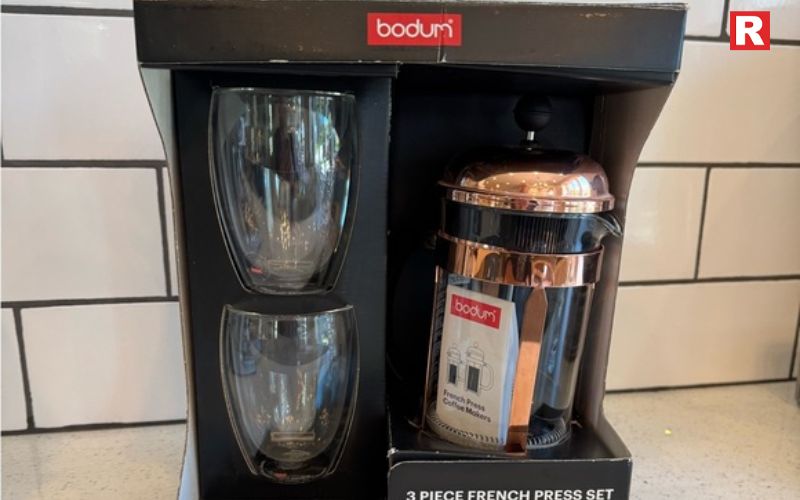
Bodum is a Swiss brand known for its stylish French presses and tea makers. In India, it has a growing following among people who like both tea and coffee. The French press by Bodum is simple, elegant, and produces rich, flavorful coffee. Many tea drinkers also use Bodum presses for brewing loose-leaf teas. Its products are made of high-quality glass and stainless steel, giving them both style and durability. Bodum is perfect for people who like minimalistic design and no-fuss brewing. While slightly higher priced, the brand offers excellent long-term value.
5. InstaCuppa
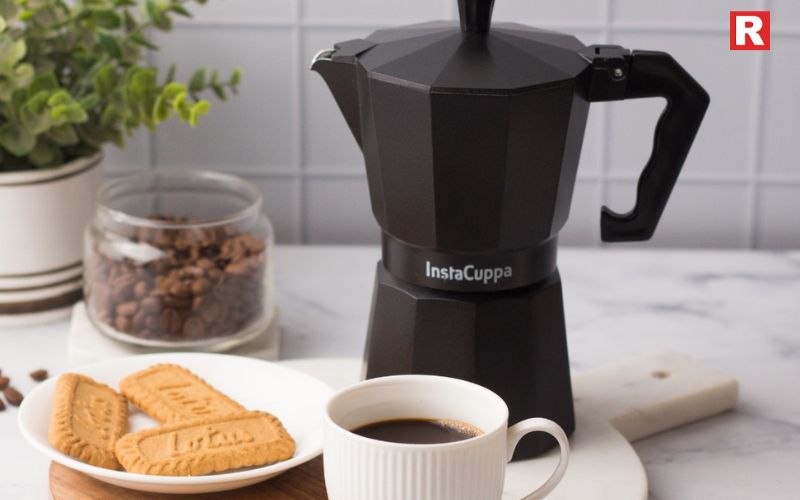
InstaCuppa is an Indian brand that has quickly made a mark in the home brewing market. It focuses on modern, affordable, and easy-to-use brewing products. The brand offers French presses, cold brew coffee makers, and infuser bottles. InstaCuppa products are designed for young professionals who want a café-style experience without spending too much. What makes InstaCuppa special is that it is a homegrown brand. It understands Indian customers’ need for affordability and practicality. It has become a popular entry-level choice for people starting their brewing journey.
6. DeLonghi
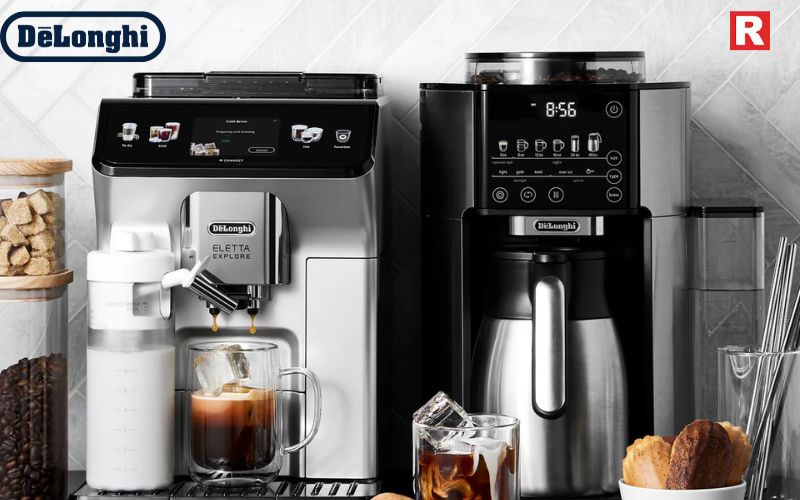
For those who want a premium brewing experience, DeLonghi is a top choice. This Italian brand is well-known for its espresso machines and high-end coffee makers. DeLonghi machines allow you to brew café-quality espresso, cappuccino, and lattes at home. They are equipped with advanced technology but are still user-friendly. In India, DeLonghi is popular among serious coffee lovers who want more than just a basic brew. It is on the expensive side, but it is considered a long-term investment for coffee enthusiasts.
Also check: 10 Coffee Shop Design Tips for Small Spaces (That Brew Big Style)
Features That Set These Brands Apart
Each of these brands stands out for different reasons:
- Philips: Reliable, durable, and budget-friendly.
- Preethi: Authentic South Indian coffee experience.
- Hario: Perfect for manual brewing and pour-over fans.
- Bodum: Elegant French press designs for tea and coffee.
- InstaCuppa: Affordable, stylish, and Indian-made.
- DeLonghi: Premium espresso machines for true coffee lovers.
The Indian Tea & Coffee Brewing Market
India’s love for tea is unmatched, but coffee is quickly gaining ground. The coffee machine market in India is expected to grow by about 8–10% CAGR till 2030. This growth is driven by urban lifestyles, higher disposable incomes, and exposure to global café culture. Specialty coffee roasters like Blue Tokai and Third Wave Coffee Roasters are also making people curious about brewing at home. Similarly, premium tea brands are encouraging customers to try loose-leaf teas and herbal blends.
E-commerce platforms and quick commerce delivery have made brewing gear accessible to people across the country. From tier-1 cities to smaller towns, more Indians are now experimenting with tea and coffee brewing.
Check more: 5 Foods to Avoid for Better Cholesterol
5 Ways to Use Garden Cress Seeds (Halim) for Stronger Hair and Bones
12 Delicious High-Protein Foods to Eat Daily for a Healthier You
How to Choose the Right Brewer for You
Choosing the right brewer depends on your taste and lifestyle.
- If you drink a lot of tea and coffee, a durable machine from Philips or Preethi is a safe bet.
- If you enjoy experimenting with flavors and brewing methods, Hario or Bodum is ideal.
- If you want something affordable and beginner-friendly, InstaCuppa is a great start.
- If you want café-quality drinks at home, DeLonghi is the best investment.
Think about your budget, the type of drinks you like, and how much time you want to spend brewing. That will help you pick the right brand.
Let’s Brew!
Brewing tea and coffee at home has moved beyond being a passing trend. It has now become a regular part of life for many people in India. The market today offers a wide range of brands that cater to different needs and preferences. Philips and Preethi are trusted for their simple and reliable machines, making them ideal for beginners and families. For those who enjoy a more premium experience, DeLonghi brings café-quality espresso makers into the home. Hario and Bodum introduce global brewing styles, loved by enthusiasts who like to experiment with pour-over or French press methods. On the other hand, InstaCuppa has gained popularity for its affordable and practical options, especially among young professionals. Each brand stands out in its own way, giving consumers plenty of choice. One thing remains clear: the right brewer not only improves taste but also makes the daily ritual of tea or coffee more enjoyable.

Coffee is more than just a drink. It is a daily ritual for many and a source of comfort. For some, it is the first thing that helps them start their day. Each cup carries its own story, aroma, and character. Some enjoy it bold and black, while others prefer it sweet and creamy. On a hot day, a chilled brew can feel refreshing and light. Around the world, coffee has taken many forms, each with its own flavour and charm. From the deep richness of espresso to the smooth balance of a cappuccino, every style offers a unique experience. Cold brew brings a mellow taste, while mocha adds a touch of chocolate. A flat white is velvety and warm, while Turkish coffee is strong and traditional. For those with a sweet tooth, an affogato blends dessert with coffee in one cup. Whether served hot or cold, simple or indulgent, coffee remains a drink that connects people across cultures. There is always a new flavour to discover and a fresh brew to enjoy.
Read more: 6 Benefits of Drinking Black Coffee
Top Vietnamese Coffee Brands Making Trends in India
The Story Behind Your Cup
Coffee has a history that stretches back centuries. Many believe it was first discovered in Ethiopia. A goat herder noticed his goats became lively after eating red coffee berries. Curious, he tried them himself and felt the same burst of energy. Word of this spread quickly. Soon, coffee found its way to the Middle East, where it became part of daily life. From there, traders and travellers carried it to Europe. Coffee houses began to open, turning into places for conversation and ideas. Over time, it reached every part of the world. Today, coffee is enjoyed in countless ways. In one place, people may sip strong, traditional brews. In another, they may try cold brews, flavoured lattes, or other modern creations. The love for coffee has only grown, and its rich history continues to influence how it is made and shared. Each cup carries a link to its long and fascinating journey.
1. Espresso – The Heart of Coffee
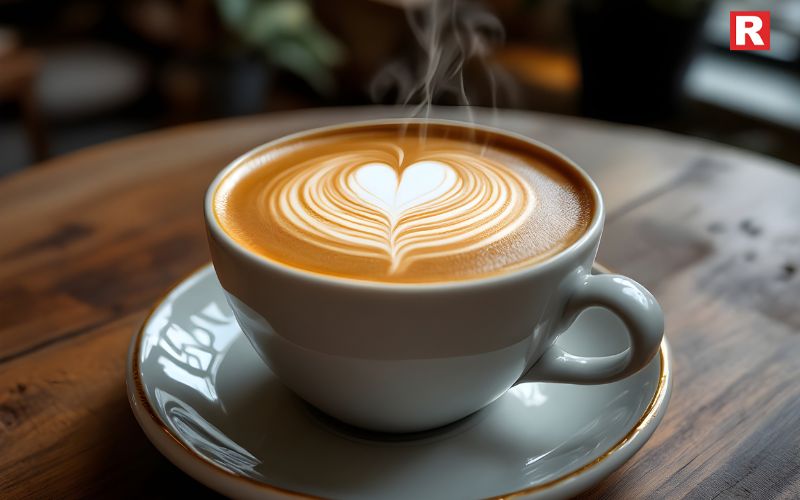
Espresso is often called the king of coffee. It is made by pushing hot water through finely ground coffee beans at high pressure. The process is quick but intense. The result is a small shot packed with strong flavour and rich aroma. On top, it forms a golden crema that adds smoothness to the taste. Espresso is the base for many other drinks like cappuccino, latte, and macchiato. It is loved for its bold character and instant energy. For true coffee lovers, a well-made espresso is more than a drink. It is a pure and powerful coffee experience in every sip.
- Taste & Aroma: Rich, intense, and slightly bitter, with a thick crema layer on top.
- Why Try It: Espresso is the base for most coffee drinks like cappuccino, latte, and macchiato. If you want to understand coffee at its core, start here.
- Best Time: Morning or whenever you need a quick, strong boost.
2. Cappuccino – Creamy Comfort
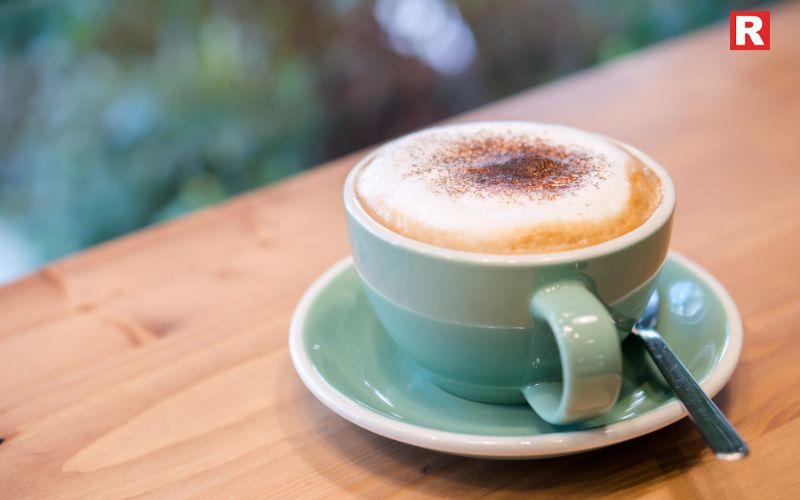
Cappuccino is a classic coffee drink known for its balance and beauty. It is made with one part espresso, one part steamed milk, and one part milk foam. The layers blend to create a smooth, creamy texture with a rich coffee flavour. This drink began in Italy, where it became a morning favourite. Over time, it spread across the world and gained loyal fans everywhere. Its frothy top can be plain or sprinkled with cocoa or cinnamon for extra taste. A cappuccino is warm, comforting, and perfect for slow mornings or relaxed afternoons. It is coffee at its most inviting form.
- Taste & Aroma: Mild coffee flavour with creamy sweetness and a smooth, frothy top.
- Why Try It: Perfect for those who find espresso too strong. It is a great middle ground — rich but still soft on the palate.
- Best Time: Morning or late afternoon, especially with a croissant or biscotti.
3. Cold Brew – Smooth and Refreshing
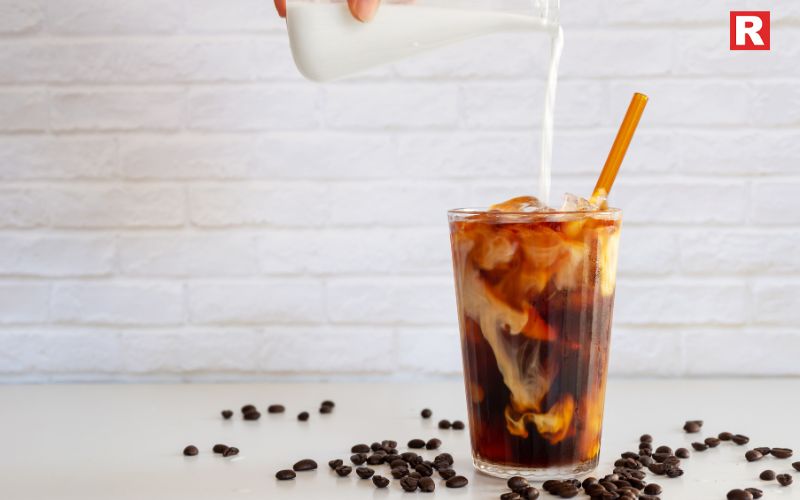
Cold brew is a refreshing coffee made through a slow brewing process. Coarse coffee grounds are steeped in cold water for 12 to 24 hours. This long extraction brings out a smooth and mellow taste. It is naturally lower in acidity, making it gentle on the stomach. Cold brew often has subtle notes of chocolate or nuts, depending on the beans used. It can be enjoyed black, over ice, or with milk for extra creaminess. Popular in warm weather, it offers a cool and energising alternative to hot coffee. Cold brew is simple, flavourful, and a favourite among modern coffee lovers.
- Taste & Aroma: Mellow, naturally sweet, with chocolate and nutty notes.
- Why Try It: Ideal for hot days. It is easier on the stomach than hot coffee and can be served over ice or with milk.
- Best Time: Midday or afternoon, especially in summer.
Know more: 11 Best Commercial Coffee Machine Brands for Café: Top Picks & Buying Guide
4. Latte – Gentle and Versatile
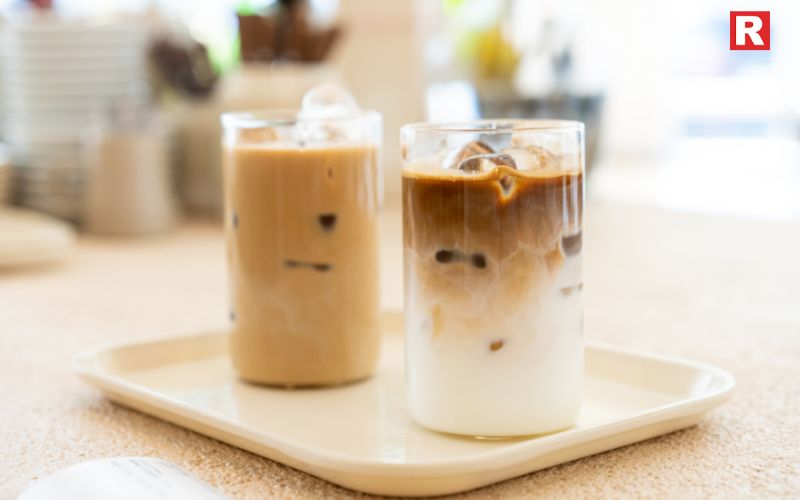
Latte, short for “caffè latte,” means “milk coffee” in Italian. It is made by combining a single or double shot of espresso with a generous amount of steamed milk. A thin layer of milk foam is added on top for a smooth finish. The result is a mild and creamy drink with a gentle coffee flavour. Lattes are often enjoyed plain, but many add flavours like vanilla, caramel, or hazelnut. Originating in Italy, the latte has become a favourite in cafés worldwide. It is perfect for those who prefer a softer coffee taste and a warm, comforting drink any time of day.
- Taste & Aroma: Soft, creamy, and mild in coffee flavour.
- Why Try It: Perfect for adding flavours like vanilla, caramel, or hazelnut. If you are new to coffee, this is a gentle way to start.
- Best Time: Morning or during a relaxed coffee break.
5. Mocha – Chocolate Lover’s Dream
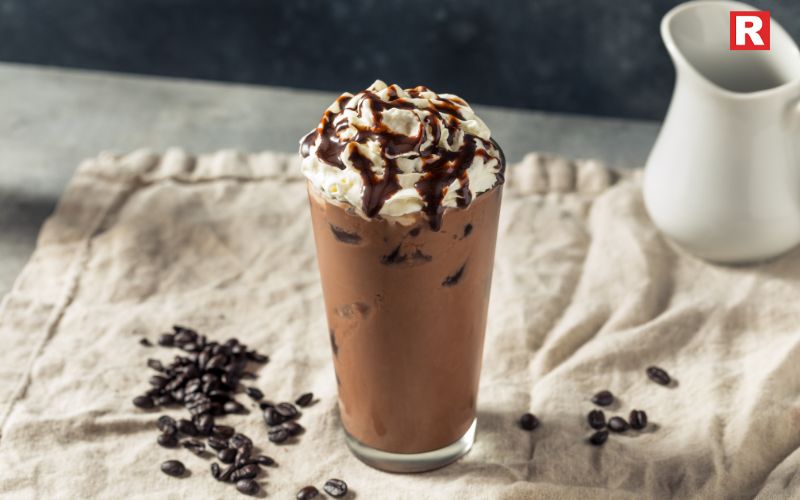
Mocha is a rich and indulgent coffee drink that blends espresso with chocolate syrup and steamed milk. It is often topped with whipped cream for extra sweetness and a smooth texture. The combination of bold coffee and sweet chocolate creates a flavour that appeals to both coffee lovers and dessert fans. Mocha can be served hot for a cosy treat or iced for a refreshing twist. Originating from the idea of mixing coffee with chocolate, it has become a popular choice in cafés around the world. It is perfect for those who want a touch of luxury in their daily coffee.
- Taste & Aroma: Rich coffee flavour blended with sweet chocolate and a creamy finish.
- Why Try It: Great for those who find black coffee too bitter. Mocha gives you the caffeine you need with a sweet treat.
- Best Time: As an after-lunch dessert or during an indulgent evening break.
6. Flat White – Smooth and Velvety

Flat white is a smooth and strong coffee that began in Australia and New Zealand. It is made with espresso and steamed milk, similar to a latte, but with less milk overall. The milk is steamed to create a thin layer of microfoam, which blends perfectly with the coffee. This gives the drink a velvety texture and a richer coffee flavour. The flat white is popular among those who want a creamy drink without losing the strength of espresso. Served in a smaller cup than a latte, it offers a balanced taste that is both bold and silky with every sip.
- Taste & Aroma: Strong espresso flavour balanced by a silky milk texture.
- Why Try It: If you enjoy the creaminess of a latte but want more coffee punch, this is your drink.
- Best Time: Morning or early afternoon when you want flavour and energy in one sip.
7. Turkish Coffee – Strong and Traditional
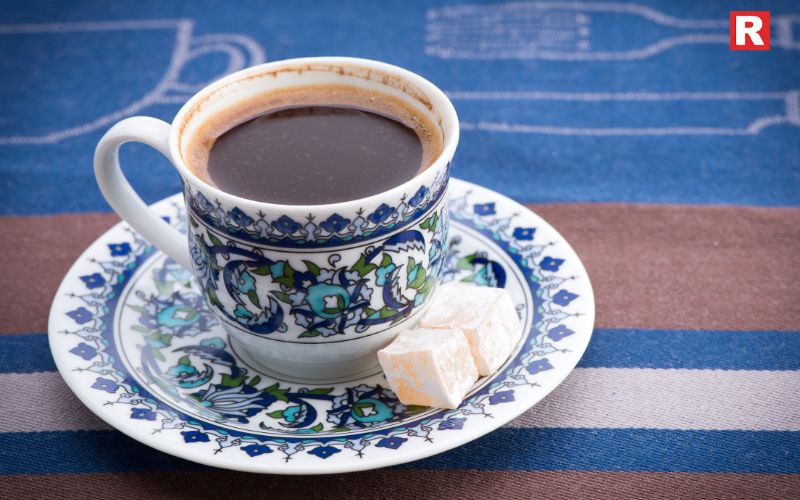
Turkish coffee is a traditional brew known for its strong flavour and rich history. It is made by simmering very finely ground coffee with water, and sugar if desired, in a small long-handled pot called a “cezve.” The coffee is never boiled but gently heated to create a thick, frothy layer on top. It is poured into small cups and served unfiltered, allowing the grounds to settle at the bottom. Often enjoyed slowly, it is sometimes flavoured with cardamom for extra aroma. Turkish coffee is more than a drink — it is a cultural ritual shared with family and friends over conversation.
- Taste & Aroma: Bold, intense, sometimes spiced with cardamom.
- Why Try It: It is more than a drink — it is part of a cultural ritual. Sipping it slowly lets you appreciate its depth.
- Best Time: After a meal, paired with a sweet treat like Turkish delight.
8. Affogato – Dessert Meets Coffee
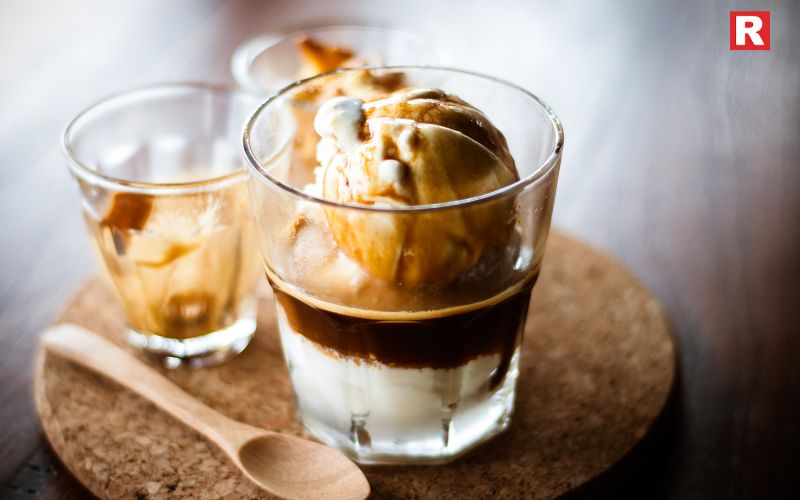
Affogato is a delightful mix of dessert and coffee. It comes from Italy, where it is often served after a meal. The name means “drowned” in Italian, as the hot espresso is poured over a scoop of cold vanilla ice cream. The heat of the coffee slowly melts the ice cream, creating a creamy, sweet, and slightly bitter blend. It can be enjoyed plain or with toppings like chocolate shavings or nuts. The contrast of hot and cold makes it unique. Affogato is simple to prepare but feels special, making it a favourite treat for coffee lovers around the world
- Taste & Aroma: Hot meets cold, bitter meets sweet — a delightful contrast in every bite.
- Why Try It: Perfect when you cannot choose between dessert and coffee. It is a simple but luxurious treat.
- Best Time: After dinner or as a special weekend indulgence.
Also check: 5 Ways to Use Garden Cress Seeds (Halim) for Stronger Hair and Bones
Neuro‑Gastronomy: The Science Behind Immersive Dining Experiences
12 Delicious High-Protein Foods to Eat Daily for a Healthier You
Coffee Facts!
- The world’s most expensive coffee, Kopi Luwak, is made from beans eaten and passed by a civet cat.
- Finland drinks the most coffee per person in the world.
- The strength of coffee depends on the brewing method, not just the bean type.
Tips for Trying New Coffees
- Start Light: If you are new, begin with lattes or cappuccinos before moving to espresso or Turkish coffee.
- Experiment with Brewing: Try French press, pour-over, or AeroPress to discover different flavours from the same beans.
- Visit Specialty Cafés: Baristas can guide you to flavours and styles you might never try otherwise.
- Pair with Food: Certain coffees taste even better with specific foods — espresso with dark chocolate, cappuccino with pastries, mocha with cookies.
What Are You Trying Next!
Every type of coffee has its own charm. Espresso delivers a bold and intense flavour, while cold brew offers a smooth and calming taste. Some drinks are rich and creamy, like a cappuccino or latte. Others, like Turkish coffee, are strong and full of tradition. Each one tells a different story through its flavour and aroma. Exploring different styles helps a person enjoy coffee in new ways. It can be about the taste, the texture, or even the feeling it brings. So, the next time someone visits a café, they should skip the usual choice. Trying something new might lead to discovering a new favourite. Sometimes, one sip is all it takes to open the door to a whole new coffee experience, and that is what makes the journey so enjoyable.

Coffee has a magical way of bringing people together, whether you're a die-hard espresso fan, a casual coffee drinker, or someone who can't get going until they have their first cup in the morning. Coffee culture has given us so many reasons to celebrate our favorite caffeinated drink, from the strong smell that tells us it's time to start a new day to those cozy café moments that need the perfect caption.
If you want to add some coffee-themed flair to your social media posts, need ideas for your coffee shop's marketing materials, or just want to show how much you love coffee, you've come to the right place. We picked out 121 coffee quotes and captions that perfectly capture every mood, moment, and reason to love coffee.
These quotes cover the whole range of coffee culture, from funny one-liners that will make your followers smile to deep thoughts about the simple joys of life. If you're posting about your morning routine, sharing a great photo of latte art, or making content for your coffee-related business, you'll find the right words to go with your coffee-related content.
So get your favorite mug, sit down with your favorite coffee, and find the perfect quote to show the world how much you love coffee.
Best Coffee Quotes and Captions for Instagram/Snapchat
Short Coffee Captions
- "Espresso yourself."
- "Life begins after coffee."
- "Coffee first, schemes later."
- "Brew-tiful mornings."
- "One sip closer to greatness."
- "Bean there, done that."
- "Caffeine mode: ON."
- "Daily grind, served hot."
- "Rise, grind, repeat."
- "Just one more cup."
Classy Coffee Captions
- "Elegance in every pour."
- "For those who taste life slowly."
- "A refined ritual, one cup at a time."
- "Sip sophistication."
- "Arabica dreams, aesthetic scenes."
- "Crafted for quiet moments."
- "Grace brewed in porcelain."
- "Your pause, perfected."
- "Where warmth meets refinement."
- "A blend above the rest."
Black Coffee Captions
- "Straight up. No sugar, no apologies."
- "Black as night, bold as truth."
- "Pure, dark, and deeply honest."
- "No cream, no nonsense."
- "For those who like their mornings unfiltered."
- "Simplicity never tasted so strong."
- "Just beans and bravery."
- "The darker, the deeper the love."
- "No milk, just willpower."
- "Bold brew for bold moves"
Cold Coffee Captions
- "Chill in a cup."
- "Brewed cool, served cooler."
- "The refreshment you never skip."
- "Sip into something smooth."
- "Hot outside, chill inside."
- "Cold caffeine, hotter mood."
- "Iced, not rushed."
- "Shake it, sip it, love it."
- "Cooling cravings daily."
- "Keep calm and pour cold."
Iced Coffee Captions
- "Ice, ice barista."
- "Frothy, fresh, fabulous."
- "Summer’s secret weapon."
- "Caffeine over cubes."
- "When life gives you heat, get iced coffee."
- "Cold brew, warm heart."
- "Ice meets bean perfection."
- "Stirred for satisfaction."
- "Liquid luxury over ice."
- "Freeze your grind."
Night Coffee Captions
- "Midnight musings, mug in hand."
- "For the thinkers, the dreamers, the night owls."
- "Caffeine, stars, and quiet hours."
- "A dark roast for a darker sky."
- "Brewed thoughts under moonlight."
- "Late-night latte logic."
- "Sleep is optional, coffee is not."
- "The calm after the café rush."
- "When the world sleeps, the grind continues."
- "Silence tastes better with coffee."
Funny Coffee Captions
- "Decaf? Never heard of her."
- "Coffee — because adulting is hard."
- "Life’s too short for bad brews."
- "Behind every successful person is a large cup of coffee."
- "I like my coffee like I like my humor — dark."
- "Espresso yourself before you wreck yourself."
- "Death before decaf."
- "Brewed awakening."
- "Coffee: the most important meal of the day."
- "Caffeine and sarcasm — my daily blend."
Morning Coffee Quotes
- “I orchestrate my mornings to the tune of coffee.” – Terri Guillemets
- “Way too much coffee. But if it weren’t for the coffee, I’d have no identifiable personality whatsoever.” – David Letterman
- “To me, the smell of fresh-made coffee is one of the greatest inventions.” – Hugh Jackman
- “Coffee is a language in itself.” – Jackie Chan
- “A morning without coffee is like sleep.” – Unknown
- "Wake up. Drink coffee. Dominate."
- "Brew your sunrise."
- "Morning mantra: sip, smile, start."
- "First the coffee, then the plans."
- "Pour joy into your A.M."
Sunday Coffee Quotes
- "Slow sips, soulful Sundays."
- “Sunday clears away the rust of the whole week.” – Joseph Addison
- "Brunch isn’t brunch without coffee."
- "Church, chill, coffee."
- "Brewed for lazy mornings."
- "A hug in a mug, best on Sundays."
- "Sunday fuel = a double shot."
- "Sip back and relax."
- "Latte love, Sunday style."
- "No alarms, just aroma."
Monday Coffee Quotes
- “I’d rather take coffee than compliments just now.” – Louisa May Alcott
- "Mondays should be canceled… unless coffee is involved."
- "Weekend detox? Just kidding. More coffee, please."
- "Coffee: because Monday happens every week."
- "Brew. Hustle. Repeat."
- “May your coffee be strong and your Monday short.” – Unknown
- "Powered by beans and ambition."
- "Mission: survive Monday. Coffee is step one."
- "Rise and grind… or just grind first."
- "Espresso yourself into the new week."
Evening Coffee Quotes
- "Post-work peace in a cup."
- "Brewing balance after the bustle."
- "Coffee, books, and city lights."
- "Evenings taste better with espresso."
- "The sunset deserves a second cup."
- "Unwind, one pour at a time."
- "Caffeine meets candlelight."
- "Nightcap, but make it coffee."
- "Let the calm brew in."
- "When dinner ends, coffee begins."
Coffee Quotes from Famous Authors
- “I have measured out my life with coffee spoons.” – T.S. Eliot
- “Coffee was only a way of stealing time that should by rights belong to your slightly older self.” – Terry Pratchett
- “Adventure in life is good; consistency in coffee even better.” – Justina Chen
- “Coffee is a way of stealing time which should by rights belong to your older self.” – Terry Pratchett
- “It’s amazing how the world begins to change through the eyes of a cup of coffee.” – Donna A. Favors
- “Science may never come up with a better office communication system than the coffee break.” – Earl Wilson
- “Coffee connects us in so many ways.” – Rohan Marley
- “Coffee smells like freshly ground heaven.” – Jessi Lane Adams
- “Coffee is a hug in a mug.” – Unknown
- “I judge a restaurant by the bread and the coffee.” – Burt Lancaster
There you have it: 121 coffee quotes and captions to make every coffee moment you share with the world better. These quotes are here to help you say what every coffee lover knows: life is better with a good cup of coffee in hand. They can help you find the right words to go with your latte art masterpiece, a new favorite quote to put in your kitchen, or some ideas for your next coffee-themed project.
So go ahead and post that picture of coffee you've been saving, start that coffee blog you've been thinking about, or just enjoy a quiet moment with your favorite mug and a quote that makes you smile. Life is too short for bad coffee, and even shorter for captions that aren't interesting. What are you waiting for now? A quote is all you need to write your next great coffee post.

Coffee culture has progressed rapidly over the recent years. Coffee originally started becoming more popular after the start of the 19th century. Before that, tea culture was more popular in many areas of the world. However, do you know the original purpose of coffee was to help monks stay awake during long prayers and meditational sessions? But now, whether it’s people who use coffee as a medium to keep them awake or people who enjoy the bitter taste of coffee, there are many coffee lovers throughout the world.
As coffee culture has been on the rise for a long time, there are many varieties of coffee available, from fancy lattes and French press creations to espresso shots. One of them is cold brew coffee, which is becoming increasingly popular among coffee lovers. And the best part is, it is not just popular because of its taste, but many other factors also contribute to why people love it. So, in this article, we’ll be exploring what cold brew coffee is and several different factors about it.
Read this: 10 Fiber-rich foods for Diabetics
What Is Cold Brew Coffee?
Cold brew coffee is a kind of iced coffee that is made by steeping coarsely ground beans in cold water for a period of about 12 to 24 hours. Unlike traditional coffee, which is usually made with hot water, cold brew needs water that is either cold or room temperature. The making of cold brew is slow, as it requires a lot of time to be steeped thoroughly. However, this process gives it a richer flavor than traditional coffee. It is more concentrated, stronger, and less acidic than traditional coffee. This brew can be enjoyed in various ways, like diluting it with water, milk, ice cream, or just as it is
How Is Cold Brew Coffee Made?
Making cold brew coffee at home is surprisingly simple. You just need to give a bit of your time for the process.
Ingredients:
- Coarsely ground coffee beans (about 1 cup)
- Cold or room temperature water (about 4 cups)
- A jar or container
- A fine mesh strainer or cheesecloth
Know more: Ice Cream Prices to Become Hot this Summer
Method:
- Combine the coffee grounds and water in a jar.
- Stir to ensure all grounds are wet.
- Cover the jar and let it sit at room temperature or in the refrigerator for 12–24 hours.
- Strain the mixture through a fine mesh or cheesecloth.
- Store the cold brew concentrate in the refrigerator for up to two weeks.
You can adjust the coffee-to-water ratio depending on how strong you like your cold brew. A 1:4 ratio is standard for a strong concentrate, which can be diluted before drinking.
Cold Brew vs. Iced Coffee: What’s the Difference?
Though both of them are served cold, cold brew and iced coffee are not the same. Here’s a quick breakdown of the key differences:
| Feature | Cold Brew | Iced Coffee |
|---|---|---|
| Brew Method | Steeped in cold water | Brewed hot and chilled |
| Brew Time | 12–24 hours | Minutes |
| Acidity | Low | Higher |
| Flavor | Smooth, rich, mellow | Bright, sometimes bitter |
| Shelf Life | Up to 2 weeks | Best consumed on the same day |
Cold brew is smoother and naturally sweeter due to the lack of heat during brewing, which preserves the bean’s natural oils and sugars. In contrast, iced coffee is regular coffee brewed hot and served over ice, often resulting in a sharper, more acidic taste.
Know this: These 7 Foods Can Help You Cool Your Stomach in Summer
Health Benefits of Cold Brew Coffee
There are many health benefits of cold brew coffee as well, which makes it even more popular.
Lower Acidity
Being made without using any heat and using cold water makes it less acidic compared to traditional coffee. This makes it a much better option for people with sensitive stomachs or acid reflux.
High Antioxidant Content
Coffee, both normal and cold brew, is rich in antioxidants; this helps the body fight inflammation and oxidative stress.
Boosted Metabolism
Cold brew has a high caffeine concentration, which can help to stimulate the metabolism, helping in fat burning and improving physical performance.
Mood and Cognitive Enhancement
Caffeine is popular because not only does it help to stay awake, but it also enhances the person’s mood and alertness and supports short-term memory and cognitive function.
Gentle on the Stomach
The low bitterness and smooth texture of cold brew make it easier to digest than other hot coffees.
Note: While cold brew is a healthy source of caffeine, adding too much sugar or taste enhancers can turn it into an unhealthy drink.
Does Cold Brew Coffee Have More Caffeine?
Yes, cold brew coffee has more caffeine than regular coffee. Especially when it is taken without diluting it with anything. It has a higher concentration than regular coffee. However, the final caffeine content depends on
- The coffee-to-water ratio
- The brewing time
- How it diluted before serving
For example, a typical Grande cold brew from Starbucks would contain about 200 mg of caffeine, compared to 150 mg in a regular brew coffee of the same size.
But the smooth taste of cold brew makes it easier to consume more caffeine without realizing it. If you’re sensitive to caffeine, make sure to dilute your cold brew with milk or water or start with a smaller serving.
Read this: Top 7 Food Safety Practices Every Restaurant Should Follow
Why Is Cold Brew So Popular?
The rise of cold brew coffee is no accident. Several factors contribute to its growing popularity:
Smooth Flavor
Cold brew is less bitter and acidic than hot-brewed coffee, making it more suitable for a large number of people.
Convenience
Cold brew can be made in batches and stored in the fridge for a long time. This makes it easier to enjoy a cup of cold brew anytime without brewing a fresh cup.
Versatility
It is a great base for other coffee-based beverages. A person can enjoy it with different diluters like sweeteners, milk, spices like cinnamon, just black, or even cocktails.
Trendy Appeal
It has a modern aesthetic, and many hip cafes use cold brew as an advertising refreshment. Cold brew has a social media-friendly allure that appeals to younger people. That is why many younger generation people are moving towards cold brew, as it is a trendy drink.
Fun Facts About Cold Brew Coffee
- Cold brew isn’t new. The original place where cold brew emerged from was centuries ago in Japan, where Kyoto-style coffee was dripped slowly using cold water.
- It’s less acidic. Compared to traditional hot coffee, cold brew can be up to 60% less acidic.
- Shelf-stable versions exist. There are many brands that are offering a shelf-stable version of cold brew, which is available in both canned and bottled forms. These products are shelf-stable until opened for drinking.
- It’s more than a summer drink. Cold brew is enjoyed all year for its rich, smooth taste despite being a cold coffee.
Cold Brew Variations You Must Try

As cold brew can be used as an ingredient for other recipes, let’s take a look at a few of them.
Cold Brew Latte
You can combine cold brew concentrate with your favorite milk or plant-based alternative over ice. This will give it a creamy texture and also dilute the concentration of the coffee.
Cold Brew Tonic
Take a shot of cold brew and add tonic water and a slice of orange or lemon for a refreshing, cool summer drink
Vanilla Sweet Cream Cold Brew
This drink is one of the popular drinks on Starbucks’ menu. Combine cold brew with sweetened vanilla-flavored cream.
Nitro Cold Brew
Served from a tap, this drink is infused with nitrogen gas, creating a creamy, stout-like texture without any milk or sugar.
How to Store Cold Brew Coffee?
Cold brew is something that can be made at home and stored for longer periods of time. However, if it is not stored properly, your time and efforts will go down the drain.
- Use an airtight container to store the cold brew concentrate in the refrigerator. It can stay fresh for up to 2 weeks in the fridge.
- However, for the best flavor, consume the cold brew within 7-10 days.
- Avoid leaving the cold brew at room temperature for long periods of time, as it can develop bacteria or the flavors will taste off.
Read more: What are Functional Ingredients: The Ultimate Guide for Restaurateurs
Is Cold Brew Coffee Right for You?
Cold brew is ideal if you:
- Prefer a smoother, high-caffeine but less bitter type of coffee
- Have stomach issues and want a less acidic coffee
- Like to prepare your coffee in advance
- Enjoy having different flavors of coffee
However, if you're sensitive to caffeine or prefer the intense aroma of hot coffee, you might find cold brew too mild or strong in caffeine when undiluted.
Conclusion
Cold brew coffee is not just some other type of coffee. It is a refreshing, flavorful drink for summer when hot coffee doesn’t work for coffee lovers. It has several health benefits, and it is also much smoother than hot coffee. Making cold brew and storing it is a good idea to shorten your coffee-preparing time. And whether you’re staying at home, going to the gym, or just going out with friends, grab a bottle of cold brew and feel refreshed this summer. With its diversity, lower acidity, and rich taste, cold brew has become a permanent member of the most demanded coffee list.

As Coffee industry is evolving, there are many brands which are coming with cafes and innovative coffees marking their mark in the sector. Launched in early 2024, Fast Coffee offers high-quality coffee in a quick service style setup while fostering a strong connection between consumers and coffee producers, standing firm on sustainability principles. The goal is to offer more than just great coffee; they aim to create sustainable, ethical coffee culture that is impactful for consumers as it is for the environment and communities that are served.
In an exclusive interview with RestaurantIndia, Soomanna MM, Founder of HumbleBean Hospitality talks about his brand identity, sustainability practices, coffee culture, expansion and much more. Excerpts:
The Entrepreneurial journey
Soomanna is a third generation small and medium farmer as he grew up in the farms. He joined the corporate world after his education, spent 13 years in banking after he got saturated into the corporate world. His main aim was to add a value with what he comes from and want to deal with issues in coffee like he can address the problem while building the brand.
The Brand and their USP
Fast Coffee was launched in early 2024. Humblebean is a luxury model founded in 2017. They also have HumbleBean Agro where they roast coffee, exports coffee and all. HumbleBean as a concept store is now called as HumbleBean Coffee and Patisserie which is focused on luxury coffee brewing craft experiences, flavor science and french patisserie. Humblebean has one concept store in Indiranagar, Bangalore. Fast Coffee will be that brand wherein everyone can resonate with.
The Vision & Mission
Their Vision is to be the Indian global brand, create products inspired by nature, drive economic activity through a socially inclusive platform and encourage mindful consumption.
The Coffee Production- How They are helping the Community
“If the place of produce doesn’t change then there is no point in building a brand. I want to address the problems of the place of produce. People are not conscious about quality orientation and if they do then the coffee can be appreciated in the main stake brewing, and it can be extremely palatable. We want to connect the place of produce into consumption of tomorrow. We wanted to be a fully integrated coffee company where the brand is supporting the farm program as without having to go to trade coffee from traders, can focus on quality orientation, education to the farming community and buy from them,” he shared.
Growth of Coffee Culture in India
Coffee culture is growing but with a different meaning, as coffee is dominated by the cafes in the name of coffee. There are very less brands that focus on coffees as there are hardly any coffee shops. Like, we promote more of coffees than food. We believe food has to be complimented alongside the coffees, but it should not overpower the actual concept.
Why sustainability and ethical sourcing became central to the brand's identity
“For us, the community work surpasses everything. I want to create the brand that is more towards sustainability taking back the mission of creating something for the farming community,” he added.
Support small and medium sized estates over single estates
Single estates are usually a definition done by specialty coffee mostly by the western world. Specialty means that scores above 82 percent. It is very difficult for small and medium farmers to follow all the process like picking, drying and others. Specialty Coffee is making India proud; this has done by less than 1 % of the farming community as it constitutes the single estates and specialty farms. We give more importance to regional focus like Kerala, Tamilnadu, Chikmanglur and other places.
Expansion plans
We have 5 dark stores and 5 outlets as of now. We are expanding in Bangalore currently then we will be moving in tier-2 and tier-1 cities. This year, we will be opening 7/8 outlets. The main focus is on Fast Coffee for expansion first, followed by HumbleBean. Right now, it’s all company owned model and not on franchise model.

According to the crisil report around 84% prefer tea and coffee as a beverage. The aroma of freshly brewed coffee has become an integral part of our daily lives, and the way we experience it is constantly evolving. In 2025, the D2C (Direct-to-Consumer) coffee market is expected to witness a surge in innovative trends, driven by changing consumer preferences and tech transformation. These emerging trends are shaping the future of D2C coffee and influencing the broader consumer landscape.
Personalization: In an era of individuality, consumers crave personalized experiences especially the millennials and the young crowd. D2C coffee brands are catering to this demand by offering customized coffee blends, subscription boxes tailored to individual preferences, and personalized brewing recommendations. This trend extends beyond coffee, with consumers seeking personalized products and services in various sectors, from fashion to fitness.
Sustainability and Ethical Sourcing: Consumers are becoming increasingly conscious of the environmental and social impact of their purchases. Coffee brands are responding by prioritizing sustainable farming practices, ethical sourcing of beans, and eco-friendly packaging. This focus on sustainability is not limited to coffee; consumers are seeking sustainable and ethically produced goods across industries, driving companies to adopt responsible practices.
Health and Wellness: The focus on health and wellness is a risingtrend influencing consumer behaviour. D2C coffee brands are offering functional coffee blends infused with vitamins, adaptogens, and other health-boosting ingredients. There are also various healthy premixes which are a trend. This trend is also evident in the broader food and beverage industry, with consumers seeking products that align with their health goals.
Technology Integration: Technology is transforming the way consumers interact with brands. A lot of brands are leveraging technology to enhance the customer experience, from AI-powered coffee recommendations to smart brewing devices. This trend is prevalent across industries, with companies using technology to personalize experiences, streamline processes, and engage with customers in innovative ways.
Experiential Consumption: Consumers are seeking experiences rather than just products. D2Cbrands are creating immersive experiences through virtual coffee tastings, online brewing workshops, and interactive content. This focus on experiential consumption is not unique to coffee; brands across industries are creating experiences that resonate with consumers and foster brand loyalty. The experiment is not just with coffee but also what goes with it like food, snacks, accessories, brewing machines etc.
Community Building: With a rise in consumption of social media, D2C brands are creating a sense of community among their customers. Through online forums, social media groups, and exclusive events, brands are creating spaces for coffee enthusiasts to connect, share their passion, and learn from each other. Community building helps connect with these consumers on a deeper level.
The trends shaping the D2C coffee market are indicative of broader consumer trends that are influencing various industries. Brands that recognize and respond to these trends will be well-positioned for success in 2025 and beyond.
The D2C coffee market is dynamic and evolving, driven by changing consumer preferences. The trends are not only shaping the future of coffee but also reflecting broader consumer trends that are influencing various industries. By understanding and responding to these trends, businesses can create products, services, and experiences that resonate with consumers and drive growth in the years to come.

India has been a country of tea drinkers for centuries, but the trend is slowly shifting towards healthier options. Matcha, a type of green tea that originated from Japan, is now making waves in India as people become more health-conscious and aware of the benefits of consuming organic products.
The first Indian matcha was produced in 2016 by a tea garden in Upper Assam. While it may not match the quality of the original Japanese matcha, it was a step in the right direction. Matcha, which literally means 'powdered tea', is consumed as tea or used as an ingredient in recipes. Its health benefits exceed those of other green teas, with 137 times more antioxidants as matcha drinkers ingest the whole leaf, not just the brewed water.
Matcha was brought to Japan by a Buddhist monk over 900 years ago and has been an essential component of Zen Buddhism philosophy ever since, especially in tea ceremonies. According to Grand View Research, matcha green tea consumption is predicted to grow from $2.6 billion in 2017 to $5.6 billion by 2025.
Matcha is already popular in the US and European countries as a superfood for fitness, but it is still a relatively new product in India. Nevertheless, the market for green tea has tripled in India, with consumers' changing mindset about organic products and rising healthcare costs. This trend is expected to surpass the market for black tea by 2025.
Matcha coffee, also known as matcha latte, is another variant of matcha that is gaining popularity in India. It has a unique flavor that is slightly bitter and earthy with a hint of sweetness. The vibrant green color comes from the chlorophyll in the tea leaves. Matcha coffee is often marketed as a natural energy booster, which appeals to India's young and busy population. It is also a favorite among fitness enthusiasts and people following a plant-based or vegan diet, as it is dairy-free and contains no animal products.
One of the key reasons for the rise of matcha tea and coffee in India is its numerous health benefits. Matcha contains caffeine, which helps to increase energy levels and improve focus. Restaurants and cafes across India are capitalizing on this trend by adding matcha tea and coffee to their menus. Many have even created specialty drinks and desserts featuring matcha as a key ingredient, which have become popular with consumers looking for unique and healthy food and drink options.
In the world of culinary exploration, the introduction of Matcha tea and coffee has been nothing short of a sensation. Fig At Malcha and Fig at Museo are just a couple of establishments that have added this unique and flavorful option to their menus, delighting their patrons with its health benefits and incredible taste. From hot tea to iced and hot lattes, this vibrant green tea has taken the culinary world by storm.
One of the great things about Matcha is that it can be served in many ways. Whether you prefer a hot tea or a cold latte, the flavor and nutritional benefits remain intact. At Fig At Malcha, they have taken it a step further by offering Matcha lattes with alt milk options, like coconut and oat milk, to give their patrons a truly elevated experience. Fig's brand manager, Sureena Dalal, believes that the gradual spike of caffeine in Matcha makes it a perfect alternative for coffee lovers who need a break.
Kampai, a Delhi-based Japanese restaurant, has also embraced Matcha in their menu. Their guests rave about the newly launched Matcha Cake, a delectable dessert with a creamy Matcha-flavored cake filling on a crunchy cookie crust. Not only does it taste great, but the visually appealing green color of Matcha has made it a popular option for Instagram-worthy food and beverages.
It's not just standalone cafes and restaurants that are taking notice of Matcha's popularity, but even food and beverage chains like Starbucks have introduced it in their menu. Their Matcha Tea Latte has become a favorite alternative to traditional coffee and tea options, with its unique taste and health benefits.
According to Pratishtha Rawat, founder of Glow Glossary, one of the prominent suppliers of Matcha tea in India, the demand for high-quality Matcha has risen gradually. People are more health-conscious and prefer a good quality Matcha that is free from additives. Rawat emphasizes that quality is paramount and cafes can no longer benefit from keeping the commodity grade tea anymore.
The gradual rise in demand for Matcha is attributed to the exposure and experience it provides. It is an acquired taste that requires patience in preparation and drinking. However, with ceremonial grade Matcha, the experience is even more delightful. The tea is delicately sweet and has a more refined taste compared to commercially sourced options, as noted by Sureena Dalal of Fig.
Matcha has taken the world by storm, and it's no wonder why. With its unique flavor, nutritional benefits, and visually appealing color, it has become a staple in the culinary world. Whether you prefer it hot or cold, in a latte or a dessert, Matcha is a must-try for all food and beverage enthusiasts.
Matcha is not only visually pleasing but also has a unique taste that can be enhanced by combining it with complementary ingredients and flavors. For example, a vanilla-based cookie soil or a soft scoop of Matcha in a dessert can add flavor and texture to the drink, making it even more delicious. When paired with the right ingredients, Matcha can become an enjoyable and palatable drink.
The presentation of Matcha tea is also essential to its success. The way it is presented and served can have a significant impact on how it is perceived by people. A beautifully crafted Matcha latte with latte art can be very enticing and inviting. The way Matcha is served and paired with other flavors can also add to the overall experience of drinking it. With the growing trend towards health and wellness, Matcha is likely to continue to gain popularity in India and become a staple in many households.

After the outbreak of COVID-19 and its spread in India, most people are staying at home as a precautionary measure. The virus spreads through droplets so crowded places are potentially dangerous. Thus, people working from home maybe weeks, a month, perhaps even longer, and can naturally occur stress and anxiety among any individual.
Coffee is considered to be the best drink to reduce stress and has stimulating qualities. It is one of those drinks that a lot of people can’t do without. A good portion of the public starts their day with coffee and even it acts as a wake-up alarm too for most of us. But to have a perfect cup of Coffee you have to step out and going outside nowadays is to be avoided. Have you ever thought of making your coffee or how about a coffee that is on-the-go and easy to carry?
However, customers are still skeptical; since the virus spreads through coughing and sneezing, one may think twice to step outside for a Coffee date or shopping Nevertheless, Beanly Coffee launched with an innovative technique to brew a cup of coffee from freshly coffee grounds. Being Eco-Conscious, this Coffee has been seeking out coffee beans that have been sustainably grown and hermetically sealed to keep the freshness permanent starting from the sourcing of the bean to the finely ground coffee for consumption Only they know how to make a finely flavored coffee by using the latest, easy and most convenient method. They have taken coffee to another level by introducing never seen before single-serve pour and dip coffee which is the latest trend among coffee connoisseurs.
Making a cup of coffee where ever and anywhere you want is every Coffee lover dream. Beanly’s Pour-Over Method for brewing coffee has remained one of the oldest and most trusted ways to brew a quality cup. The coffee brand has introduced an innovative new method to drink coffee with single serve pour producing a consistently great coffee every time because there is more control over the heat and the timing of the water poured over the grounds - which means more flavor and less bitterness. You don’t need to grind or use any electricity nor do they need any hefty maintenance or cleaning costs.
Revolutionizing Dip coffee which involves running hot water through coffee grounds that are held in a filtering device. Processing and adding the right amount of coffee beans in a coffee bag is tough but important. Beanly uses the highest quality beans that give the best flavour you have ever tasted. The coffee dips usually made up of water and essential coffee oil extracts, are then collected inside a coffee collecting basin. This dipping coffee has no side effects and is non- toxic for the body and has everything perfect. Originating from Hasan, Baba Budangiri, Chikmagalur, and Coorg, all these make a perfect coffee to taste.
In conclusion, in these times of distress, it is more convenient for people to make a homemade food or homemade drinks. Beanly has risen to the occasion to make daily life more comfortable for the consumers. We aim to keep our Coffee stable, convenient and easy to use. Made with love and packed with care! In this difficult time, BEANLY COFFEE assures the highest level of service, quality, safety, and commitment.
Inputs From: Rahul Jain and Samayesh Khanna, Founder, Beanly Coffee

Global coffee exports reached 8.79 million 60-kg bags in January, up slightly from the same month in 2014, showed the ICO data, according to a latest Reuters report.
World coffee production in 2014-2015 is estimated to drop by 3.2 per cent from the previous season to 142 million bags, the lowest in three years, the International Coffee Organization said in a report.
The output was revised up slightly from 141.6 million 60-kg bags estimated last month due to higher output in Honduras and slight upward adjustments in Tanzania, Cameroon, Rwanda and Burundi, the London-based ICO said in its February report.
"This puts the coffee market into a deficit for the current year, although stocks in exporting countries have so far allowed exports to continue at a strong pace," the report said.
World coffee consumption is expected to grow at least 2 per cent in 2015, picking up from an annual rise of 1.8 per cent last year when consumption was at around 149 million bags, an ICO executive said on Friday.
Global coffee exports reached 8.79 million 60-kg bags in January, up slightly from the same month in 2014, ICO data showed.

Witnessing this trend the coffee chains have also started manufacturing their own machines. For example, Cafe Coffee Day, one of the largest coffee retail chains in India has recently launched its own brand of coffee maker called Coffee Day Wakecup which is capable of dispensing two different flavours of coffee in 30 seconds. The machine also comes with milk frother that will help the consumer make his own cappuccino by providing foamy topping of milk.
Machines used in restaurants & cafes
With the changing demands, restaurants and cafes today prefer a unique range of professional coffee machines at their outlets that can save their staffing cost and thus new age coffee machines at these outlets can prepare a cup of coffee by less human effort. Some of the machines which are used by the restaurant owners are super automatic machines, traditional machines, coffee dosing machines and Le Pavoni amongst other.
Commenting on the machines used by the cafes, Rahul Leekha, Director, Di Bella Coffe India, says, “We widely use Wega Coffee Machines in Australia and in India we use La Cimbali coffee machines apart from Wega . Both are very premium machines with high performances.”
Cost accounting
Generally price of a coffee machine depends on its features and the brand the machines represent. Some of the coffee machines are available at a starting price of Rs 4,000 to Rs 5,000 which goes higher to a range of Rs 5 – Rs 7 lakh depending on the industry standards, durability, long-life, high performance and capability.
For example, the coffee machines made by CCD which is capable of dispensing two different flavours of coffee in 30 seconds are priced at Rs 3,999 (semi-automatic) and Rs 4,999 (automatic) exclusive of taxes. On the other hand Lavazza's sleek portable coffee machines named as Lavazza Blue 850 are priced at Rs 13,500. While the price of the high performance machines like Lacimbali and La Pavoni used by the coffee chains and restaurants in India are approximately priced between Rs 5-7 lakh.
Commenting on the same, Dinesh Singh Gosain of Indian Coffee House, said, “The price of a coffee machine depends on its quality and service. We have machines approximately ranged between Rs 2-3 lakh.”
Making the brewing easy
The machines used by the restaurants are not only competing with the industry standard but also meeting the need and the demand of the cafes increasing the efficiency of the brewing game.
Speaking on the same, Trilok Saini, Manager, The Coffee Bean and Tea Leaf, says, “The professional machines that we use at our cafes are very efficient and works without any disturbance brewing at least 1000 cup coffee per day with its high pressure maintaining capacity.”
Coffee machines which has high pressure maintaining capacity maintains the water and steam pressures working continuously for hours without creating any delay in the business.
Coffee machine manufacturers
Coffee machine manufacturers and suppliers in the country have geared up manufacturing and supplying the best quality coffee machines seeing a great demand of the café culture in the country. Though cafes like Di Bella directly import the machine from Italy but brands like Coffee Bean and Tea Leafs buy these machines from Mittal International located in Delhi which is known for supplying imported machines and tools.
Some of the other coffee machine manufacturer names include Aroma Technical Care, Chennai, Tamil Nadu, Café Coffee Day and Lavazza which have also marked their footprints in manufacturing machines.
Technical know-how
Coffee machines can suffer from a variety of faults including obstructions, blockages and electrical issues. Many of these common faults can be rectified relatively easily and prevented from happening in the first place. Many a times if the fault is major- replacement is the only solution.
One of the most common faults in coffee machines is blockages which clog the water dispenser tube and slows down the operation of the machine by preventing water from running freely through the filter basket. Using fresh water during coffee preparation is the solution for this type of blockages.
Speaking about how the damages are recovered, Saini, says, “Replacement is the only solution if the damage is major, however minor issues are brought to the notice of the manufacturers if the machine is in warranty period.”
To conclude, it is here to say that growing demand for coffee in India is giving a new direction to the equipment manufacturers by forcing them to come up with new and modern technology coffee machines giving the coffee dispensing businesses an ease by producing high quality coffee within a flash of seconds.
Copyright © 2009 - 2025 Restaurant India.





